History
History depends on who writes it and who survives it. It is shaped by those who promote it and those who
contribute to it. The official history of American biofeedback started in 1969 at the Surf Rider Inn in Santa
Monica, California. Barbara Brown, a Veterans Administration (VA) electroencephalography (EEG) researcher,
organized this meeting and placed her feisty stamp on the field. Here, the separate threads of scientific
research into the possibility of autoregulation and the autoregulation practices of millennia-old meditative
techniques coalesced. (Peper & Shaffer, 2010, p. 142).
When we examine biofeedback history, Erik Peper has played an indispensable role in connecting, teaching, and collaborating with countless leaders in our field. Erik has generously mentored colleagues who have become our leading educators and researchers. An indefatigable traveler, he has promoted biofeedback internationally in countries like Germany, Hong Kong, Italy, Japan, and Taiwan through his popular lectures and the Biofeedback Federation of Europe.
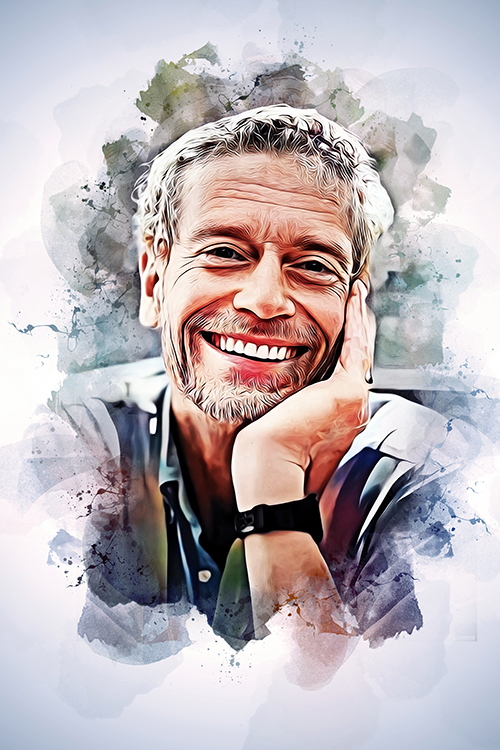
BCIA Blueprint Coverage
This unit addresses the
History of biofeedback (I-B).

This unit covers Early Antecedents,
Cybernetic Theory, Operant Conditioning, Studies Demonstrating Voluntary Autonomic Control, and Divergent Movements in Biofeedback.
Please click on the podcast icon below to hear a lecture over the first half of this unit.

Early Antecedents
The concept of self-regulation (voluntary control of biological processes) is ancient, despite our recent
rediscovery of them. Hindus practiced systems of yoga almost 5,000 years ago in India. Watch
A Brief History of Yoga.
Before the term
biofeedback
was popularized in 1969, contributors repeatedly demonstrated this learning process without understanding its
implications and broader application.
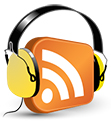
Listen to a mini-lecture on Early Antecedents to Biofeedback © BioSource Software.
Claude Bernard (1865) proposed that the body strives to maintain a steady state
(milieu interieur).
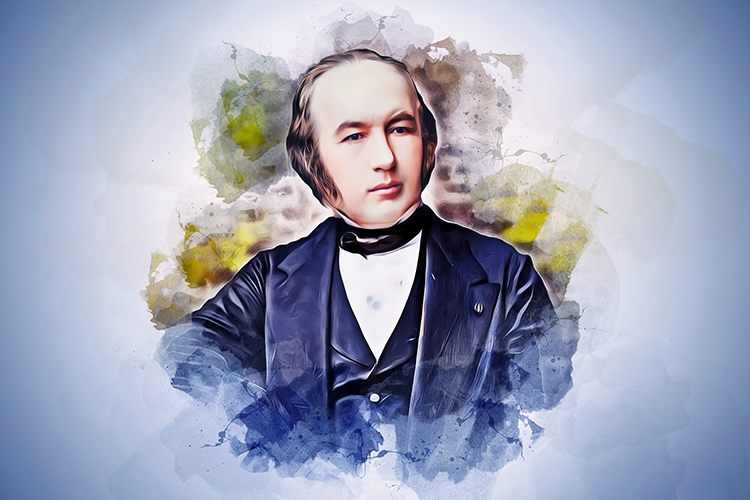 Walter Bradford Cannon
Walter Bradford Cannon (1914) expanded on this concept when
discussing stress (a force that acts to disturb internal homeostasis) and
homeostasis (a steady state).
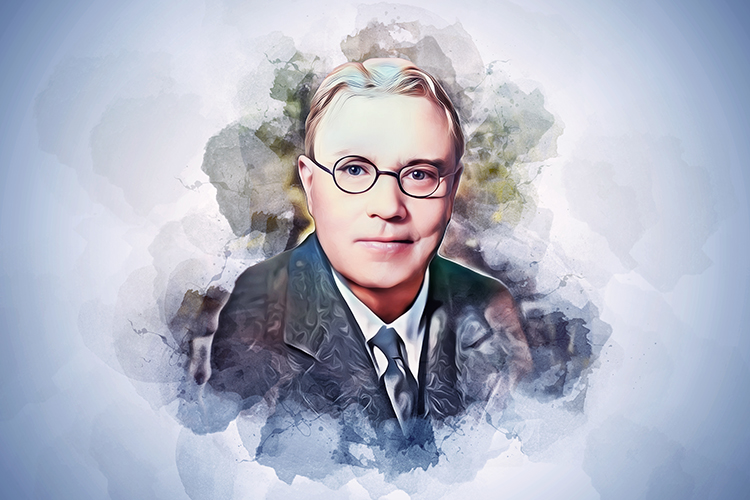 Janos Hugo Bruno "Hans" Selye
Janos Hugo Bruno "Hans" Selye (1963) studied the endocrine effects
of chronic stress, proposed the three-stage General Adaptation Syndrome, and popularized the term
stress in
The Stress of Life (1956).
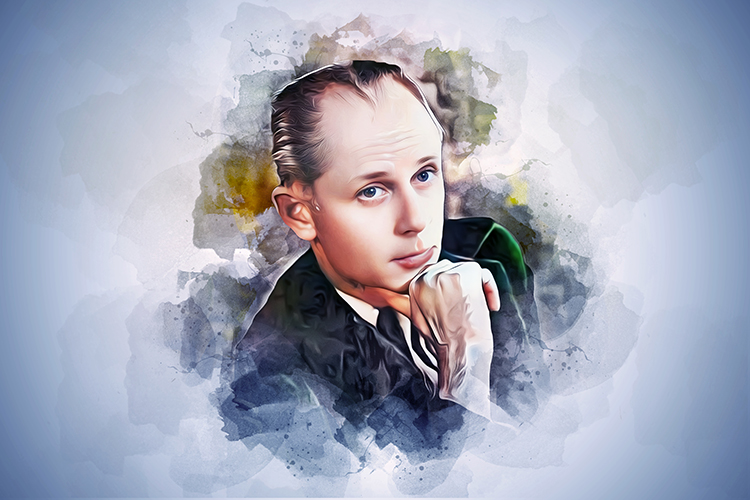
Bell, Tarchanoff, and Bair pioneered the contemporary study of
self-regulation.
Alexander Graham Bell (1872) studied teaching the deaf
to speak using biofeedback.
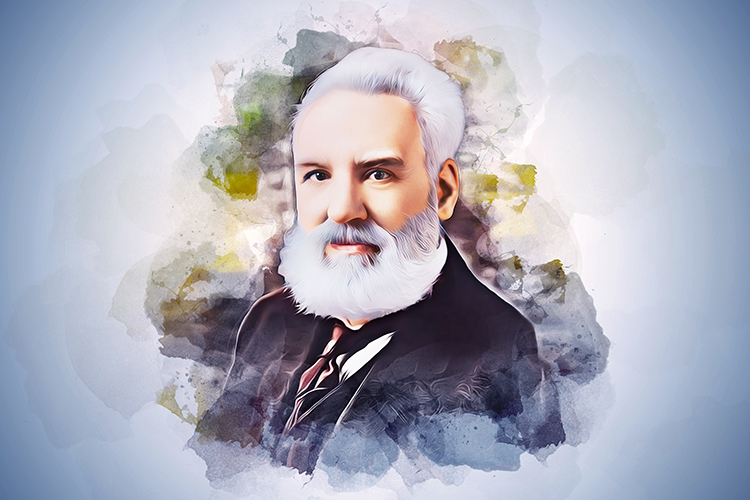
He investigated Leon Scott's
phonautograph, which translated sound
vibrations into tracings on smoked glass to show their acoustic waveforms.


Bell also examined Koenig's
manometric flame, which
displayed sounds as patterns of light. The photographs below are from R. Victor Jones (Bruce, 1973).


Ivan Tarchanoff (1885) showed that voluntary control of heart rate could be
fairly direct (cortical-autonomic) and did not depend on "cheating" by
altering breathing rate.
J. H. Bair (1901) studied voluntary control of the
retrahens muscle that
wiggles the ear. He found that participants learned this skill by inhibiting
interfering muscles. This was a solid demonstration of skeletal muscle
self-regulation.
Cybernetic Theory
Norbert Wiener (1948) developed
cybernetic theory, which proposed that systems are
controlled by monitoring their results. Your home heating system is an excellent example of a cybernetic system. Cybernetic theory contributed
concepts like
system variable (what is controlled),
setpoint (goal),
feedback (corrective instructions), and
feedforward (instructions based on anticipated conditions).

The participants at the landmark 1969 conference at the
Surfrider Inn in Santa Monica coined the term
biofeedback from Wiener's feedback
(Moss, 1998).
This group needed a name, and the two candidates were biofeedback and autoregulation. Just before the
final vote, someone in the audience yelled out that autoregulation sounded like government control of cars. This
spontaneous comment created a tipping point, the consensus shifted to biofeedback, and the Biofeedback Research
Society (BRS) was born. (Peper & Shaffer, 2010, p. 142)
Operant Conditioning
Edward Lee Thorndike (1911) advanced the term
instrumental learning to describe
voluntary responses that obtain a desired outcome. His law of effect
proposed that successful responses are mechanically stamped in by their
successful consequences.
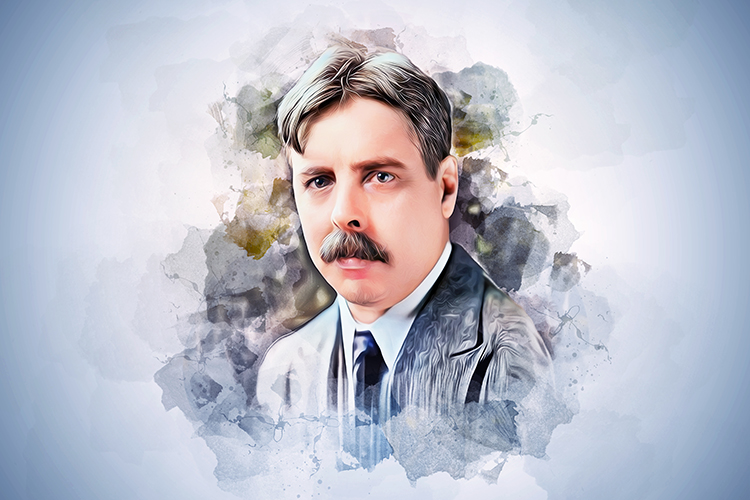 Burrhus Frederic Skinner's
Burrhus Frederic Skinner's (1938)
operant conditioning research expanded on Thorndike's
law of effect. He argued that animals repeat responses followed by favorable consequences based on extensive laboratory findings.
Skinner introduced several concepts that have influenced biofeedback
theory.
Reinforcement is a process where the consequence of a voluntary
response increases the likelihood it will be repeated. Results that
strengthen responses are called
reinforcers.
Punishment is a process that
actively suppresses responses. The consequence of a voluntary response
decreases the likelihood that it will be repeated. Outcomes that
weaken responses are called
punishers.
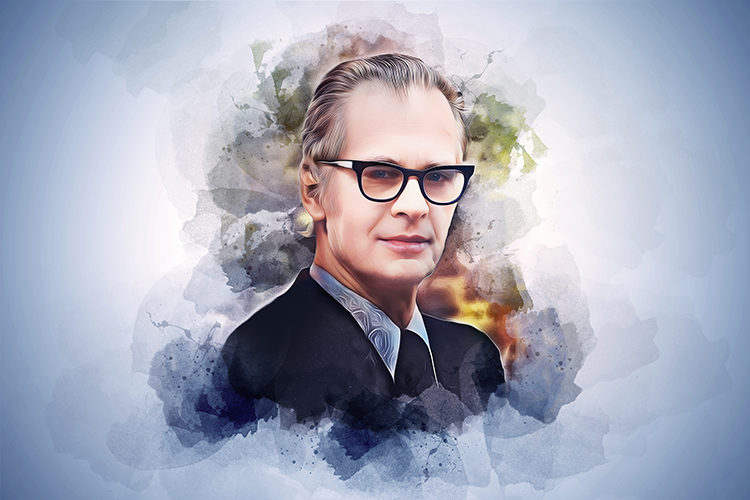
br>
Based on Skinner's work, researchers used operant theory to divide physiological responses into those that could
be voluntarily controlled and those that could not.
From its inception, biofeedback had to overcome the entrenched paradigm that individuals could not
voluntarily control autonomic functions. Researchers who applied B. F. Skinner's work to biofeedback used
operant theory to determine which responses could be voluntarily controlled and which could not. For example,
Kimble (1961) argued that although participants could learn to consciously control skeletal muscle responses,
autonomic processes (such as heart rate) were involuntary, could be only classically conditioned, and were
forever outside of conscious control. This perspective ignored the almost 3,000-year-old yogic practice of
autonomic control and research by Lisina (1958); Lapides, Sweet, and Lewis (1957); and Kimmel (1967) that
demonstrated voluntary control of autonomic responses. (Peper & Shaffer, 2010, p. 143)
Studies Demonstrating Voluntary Autonomic Control
The belief that only skeletal muscles could be voluntarily controlled
ignored Indian yogis' practice of autonomic control for over 5000
years. It also ignored research by Lapides, Sweet, and Lewis; Lisina;
Kimmel; and Miller and DiCara that demonstrated voluntary control of
autonomic responses. Ironically, Skinner observed in 1938 that performers
could learn to cry (an autonomic response) on cue.
J. Lapides, R. B. Sweet, and L. W. Lewis (1957) temporarily paralyzed male participants and
trained them to stop urination twice as fast as normal using only
(autonomically-controlled) smooth muscle.
M. I. Lisina (1965) combined classical and
operant conditioning to train participants to change blood vessel diameter.
She elicited reflexive blood flow changes and then displayed the changes
in their blood flow to teach them voluntary temperature control.
H. D. Kimmel (1974) operantly trained participants to sweat (measured by the
galvanic skin response).
Scientific paradigms function like filters that determine which hypotheses should be investigated. When
Neal Miller tried to encourage graduate students to train rats to achieve autonomic control through instrumental
learning, all but one balked. Why investigate a phenomenon that could not possibly exist? (Peper
& Shaffer, 2010, p. 143)
Neal Elgar Miller and Leo DiCara (1967, 1969, 1974, 1978) operantly conditioned heart rate,
blood
pressure, kidney blood flow, skin blood flow, and intestinal contraction
in paralyzed and unparalyzed rats.
Curare was used to paralyze rats
to prevent cheating by changing their breathing pattern. The reinforcer
was electrical stimulation to the medial forebrain bundle. Their
demonstration that both paralyzed and unparalyzed rats could learn to
produce these autonomic changes gave biofeedback scientific credibility
and led to National Institutes of Mental Health (NIMH) funding for biofeedback research.

Listen to a mini-lecture on Miller and DiCara © BioSource Software.
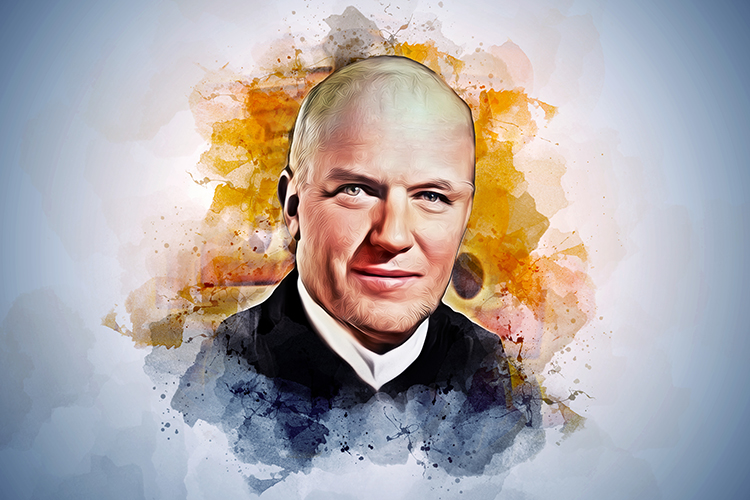
Miller and graduate student Leo DiCara conducted the landmark study that demonstrated that curarized
rats could operantly learn to control their autonomic functions. Their 1968 publication, "Instrumental Learning
of Vasomotor Responses by Rats: Learning to Respond Differentially in the Two Ears," in the influential journal
Science challenged the dogma that autonomic processes cannot be voluntarily controlled (DiCara & Miller,
1968). Their evidence was compelling. Paralyzed rats couldn't "cheat" by altering their breathing pattern or
muscle tone. Their research was a crucial thread in our tapestry because it challenged researchers to
investigate which other physiological processes could be voluntarily controlled and secured prestigious National
Institute of Mental Health funding, which helped to establish the scientific legitimacy of biofeedback (Miller,
1969, 1978; Miller & DiCara, 1967; Miller & Dworkin, 1974)." (Peper & Shaffer, 2010, p.
143)
Controversy clouded the paralyzed rat studies. While the unparalyzed rat findings have held up, attempts to
replicate (reproduce) the curare findings have yielded smaller but dependable heart rate changes (Hothersall & Brener, 1969; Slaughter et al., 1970; Trowill, 1967). Taub (2010) provides an authoritative history of Miller and DiCara's research.
Miller and
Bernard Brucker (1979) investigated whether quadriplegic patients, who have limited voluntary skeletal muscle activity, could achieve autonomic change without somatic mediation. Brucker is pictured below.
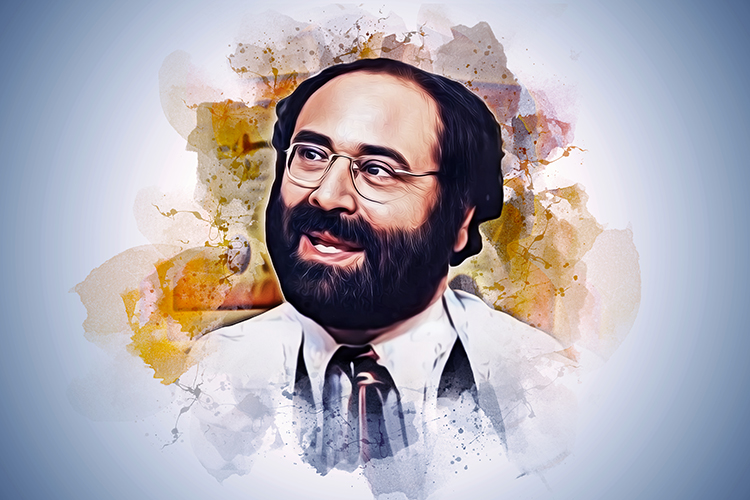
These paralyzed patients, who experience low blood pressure when lying in bed,
learned to produce large-scale blood pressure increases without using their skeletal muscles.
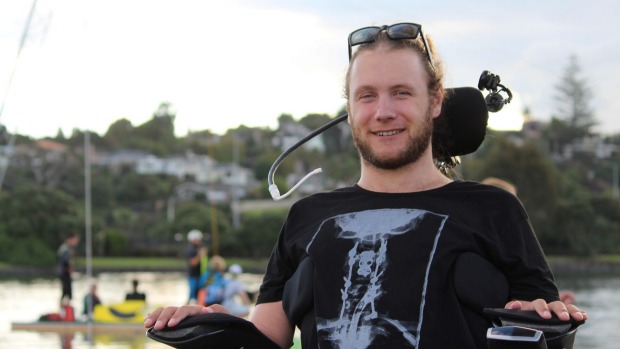
Divergent Movements in Biofeedback
Biofeedback researchers have studied autonomic responses, incontinence, the brain,
electrodermal system, skeletal muscle system, cardiovascular system, and pain. We will
successively review significant contributions in each of these areas.
Remember that contributors from different disciplines (like rehabilitative medicine and animal learning) worked in relative isolation in biofeedback's infancy. The founding of the Bio-Feedback Research Society in
1969 provided a forum for interdisciplinary exchange.
Incontinence
Orval Hobart Mowrer (1938, 1960) detailed using a
bedwetting alarm that sounds when children urinate while asleep. Mowrer is pictured left in this Waterloo Digital Library photograph.
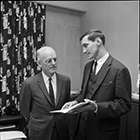
This simple biofeedback device can quickly teach children to wake up when their bladders are full, contract the urinary sphincter, and relax the detrusor muscle, preventing further urine release. Through classical
conditioning, sensory feedback from a full bladder replaces the alarm and
allows children to sleep without urinating.
 Arnold Henry Kegel
Arnold Henry Kegel developed the
perineometer
in 1947
to treat
urinary incontinence (urine leakage)
in women whose pelvic floor muscles are weakened during pregnancy and
childbirth. The perineometer, inserted into the vagina to
monitor pelvic floor muscle contraction, satisfies all the requirements
of a biofeedback device and enhances the effectiveness of popular Kegel
exercises (Perry & Talcott, 1989).
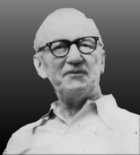
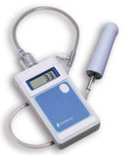
In 1992, the
United States Agency for Health
Care Policy and Research recommended biofeedback as a
first-line treatment for adult urinary incontinence (Whitehead, 1995).
William E. Whitehead (1996) demonstrated the
efficacy of biofeedback in eliminating or reducing the frequency of anal
incontinence. Graphic courtesy of the Rome Foundation.
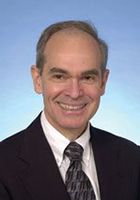
Brain Research
Many researchers laid the foundation for landmark contributions of Hans Berger and modern contributors like Joe Kamiya, M. Barry Sterman, and Joel Lubar.
Luigi Galvani reported electrical currents in animals in 1791, which Aldini confirmed in 1794, and Von Humboldt in 1797. Galvani graphic courtesy of Wikipedia.
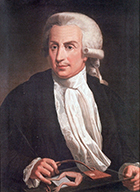 Ernst von Fleischl-Marxow
Ernst von Fleischl-Marxow recorded visual cortical potentials in 1833 but did not describe
rhythmic oscillations. Graphic courtesy of Wikipedia.
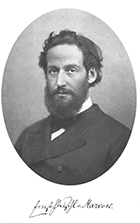 Emil Heinrich du Bois-Reymond
Emil Heinrich du Bois-Reymond reported electrical conduction in muscles and peripheral
nerves in 1848. Graphic courtesy of ResearchGate.
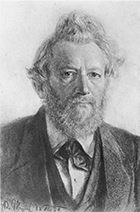 Gustav Theodor Fritsch
Gustav Theodor Fritsch and
Eduard Hitzig discovered that cortical stimulation elicits a localized
motor response in 1858 (Swartz & Goldensohn, 1998). Graphics courtesy of
Alchetron, The Free Social Encyclopedia, and Wikidata.
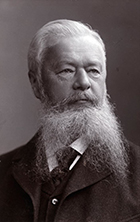
_AB.1.0435_Hitzig_CROPPED.tif.jpg) Richard Caton
Richard Caton (1875) recorded spontaneous electrical potentials from the exposed
cortical surface of monkeys and rabbits and was the first to measure event-related potentials (EEG responses to
stimuli) in 1875.

Listen to a mini-lecture on Brain Research © BioSource Software.
 Vasily Iakovlevich Danilewsky
Vasily Iakovlevich Danilewsky published
Investigations in the Physiology of the Brain,
which explored the relationship between the EEG and states of consciousness in 1877 (Brazier, 1959). Graphic courtesy of Wikimedia Commons.
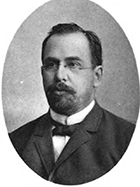 Adolf Beck
Adolf Beck published studies of spontaneous electrical potentials detected from the
brains of dogs and rabbits and was the first to document
alpha blocking, where light alters rhythmic
oscillations, in 1890 (Coenen et al., 1998).
 Sir Charles Scott Sherrington
Sir Charles Scott Sherrington introduced the terms
neuron and
synapse and published the
Integrative Action of the Nervous System
in 1906. Graphic courtesy of Wikipedia.
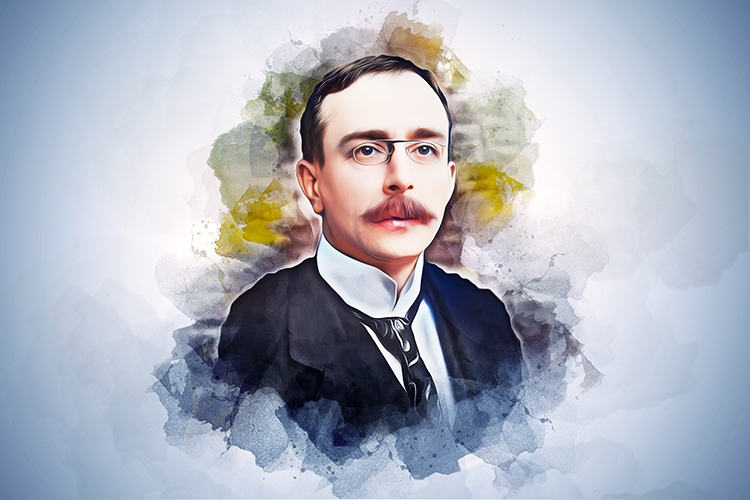 Vladimir Pravdich-Neminsky
Vladimir Pravdich-Neminsky (1913) photographed the EEG and event-related potentials
from dogs demonstrated a 12-14 Hz rhythm that slowed during asphyxiation and introduced the term
electrocerebrogram
in 1912. Graphic courtesy of Wikipedia.
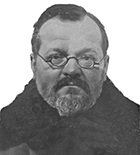 Alexander Forbes
Alexander Forbes and D. W. Mann (1924) reported replacing the string galvanometer
with a vacuum tube to amplify the EEG in 1920. The vacuum tube became the de facto standard by 1936.
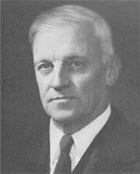
Hans Berger (1920) published the first human EEG data. He recorded electrical potentials from his son
Klaus' scalp. He viewed the EEG as analogous to the ECG and introduced the term
elektenkephalogram. He
believed that the EEG had diagnostic and therapeutic promise in measuring the impact of clinical interventions.
Berger showed that
these potentials were not due to scalp muscle contractions. He first identified the
alpha rhythm, which he called the
Berger rhythm, and
later identified the
beta rhythm and
sleep
spindles. He demonstrated that alterations in consciousness are associated with changes in the EEG and
associated the beta
rhythm with alertness. He described interictal activity (EEG potentials between seizures) and recorded a partial
complex seizure in 1933. Finally, he performed the first qEEG, which measures the signal strength of
component EEG frequencies (Hassett, 1978; Robbins, 2000;
Swartz & Goldensohn, 1998).

Researchers who followed Berger validated and extended his findings. Their work identified additional EEG waveforms and inaugurated clinical electroencephalography and sleep medicine.
Edgar Adrian and B. H. C. Matthews (1934) confirmed Berger's findings by recording their EEGs using a
cathode-ray oscilloscope. Their demonstration of EEG recording at the 1935 Physiological Society meetings in
England caused its widespread acceptance. Adrian (shown below) used himself as a subject and demonstrated the
phenomenon of
alpha blocking, where opening his eyes suppressed alpha rhythms.
 Matthews
Matthews (shown below) developed the oscillograph and differential amplifier, which is used in modern biofeedback and neurofeedback amplifiers
 Frederic Andrews Gibbs
Frederic Andrews Gibbs, Hallowell Davis, and William Lennox inaugurated clinical electroencephalography in 1935 by
identifying abnormal EEG rhythms associated with epilepsy, including interictal spike waves and 3-Hz activity in
absence seizures (Brazier, 1959). Erna and Frederic A. Gibbs are pictured below.
 Frédéric Bremer
Frédéric Bremer used the EEG to show how sensory signals affect vigilance in 1935.
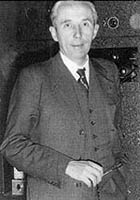 William Grey Walter
William Grey Walter (1937, 1953) named the
delta and
theta waves and the
contingent negative variation (CNV), a slow
cortical potential that may reflect expectancy, motivation, intention to act, or attention. He located an
occipital lobe source for alpha waves and demonstrated that delta waves could help find brain lesions like tumors.
He improved Berger's electroencephalograph and pioneered EEG topography (Bladin, 2006).
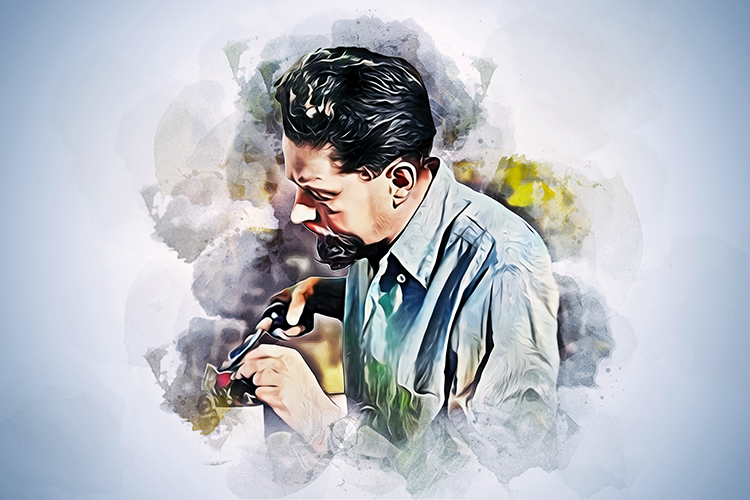 Nathaniel Kleitman
Nathaniel Kleitman (1960) has been recognized as the "Father of American sleep research" for his seminal work in sleep-wake cycle regulation, circadian rhythms, the sleep patterns of different age groups, and the effects of sleep deprivation. He discovered
rapid
eye movement (REM) sleep with his graduate student Aserinsky in 1953.
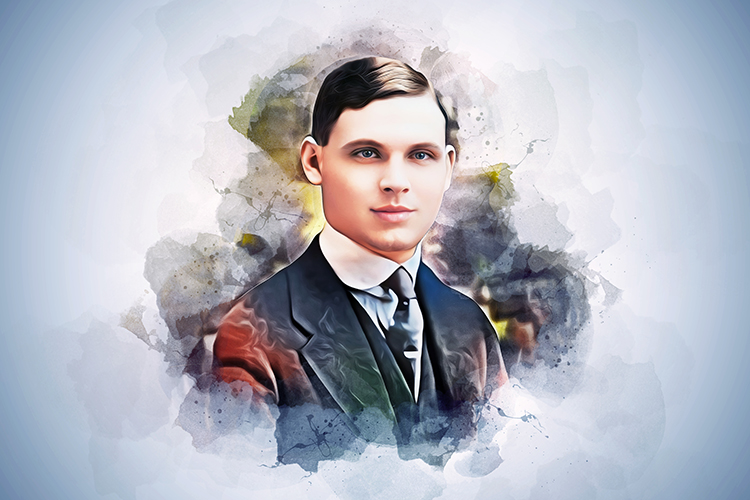 William Charles Dement
William Charles Dement (2000), another of Kleitman's students, described the EEG architecture and phenomenology of
sleep stages and the transitions between them in 1955, associated REM sleep with dreaming in 1957 and documented
sleep cycles in another species, cats, in 1958, which stimulated basic sleep research. He established the Stanford
University Sleep Research Center in 1970.
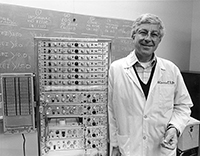
Andersen and Andersson (1968) proposed that thalamic pacemakers
project synchronous alpha rhythms to the cortex via thalamocortical circuits.
Joe Kamiya (1969) demonstrated that the alpha rhythm in humans could be operantly
conditioned. He published an influential article in
Psychology Today that
summarized research that showed that participants could learn to discriminate
when alpha was present or absent and could
shift the dominant alpha frequency by ~ 1 Hz using feedback. Almost half of his
participants reported experiencing a pleasant "alpha state" characterized as
an "alert calmness." These reports may have contributed to the perception
of alpha biofeedback as a shortcut to a meditative state. He also studied the EEG correlates of meditative states.
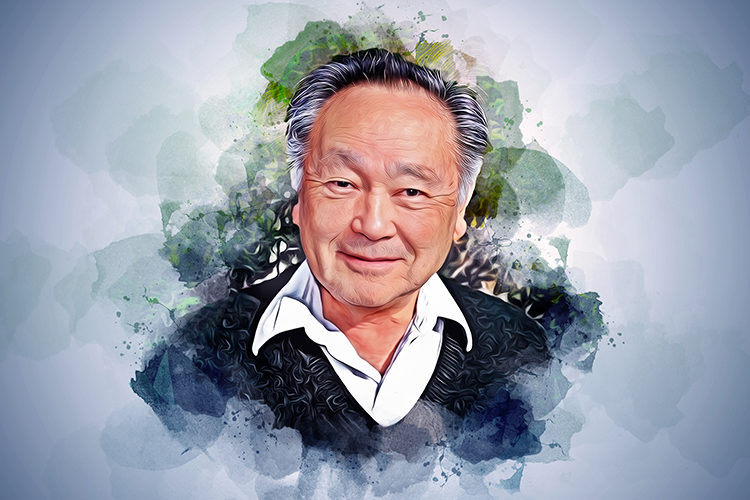
Both the public and academic worlds recognize Joe Kamiya as the father of biofeedback. In 1966, while
monitoring participants' EEGs in his sleep lab at the University of Chicago, he performed a novel experiment by
ringing a bell whenever an alpha burst occurred. He discovered that some participants could discriminate when they
produced alpha activity. His 1968 publication of "Conscious Control of Brain Waves" in Psychology Today summarized research that showed that participants could learn to discriminate when alpha was present or absent and
that they could use feedback to shift the dominant alpha frequency about 1 Hz. Almost half of his participants
experienced a pleasant alpha state, which they characterized as an "alert calmness." Kamiya's article made
biofeedback accessible to the public and made it exciting because it suggested that individuals can learn to
control their own consciousness.
Alpha biofeedback fit an emerging zeitgeist of self-exploration. American culture in the 1960s and 1970s
was shaped by a confluence of forces: exploration of consciousness through drugs such as LSD (Timothy Leary and
Richard Alpert) and Eastern meditative practices such as transcendental meditation (TM). Harvard physician
Herbert Benson repackaged TM as the relaxation response without an overt spiritual dimension. Kamiya's work
implied that a language of consciousness was possible and resulted in neurofeedback, one of the most promising
areas of biofeedback. (Peper & Shaffer, 2010, p. 143)
Barbara B. Brown (1974, 1977, 1980) demonstrated the clinical use of alpha-theta
biofeedback. In research designed to identify the subjective states associated with EEG rhythms, she trained
participants to increase the abundance of alpha, beta,
and theta activity using visual feedback. She recorded their subjective
experiences when the amplitude of these frequency bands increased. Brown also helped
popularize biofeedback by publishing a series of books, including
New
Mind, New body (1974),
Stress and the Art of Biofeedback (1977), and
Supermind
(1980).
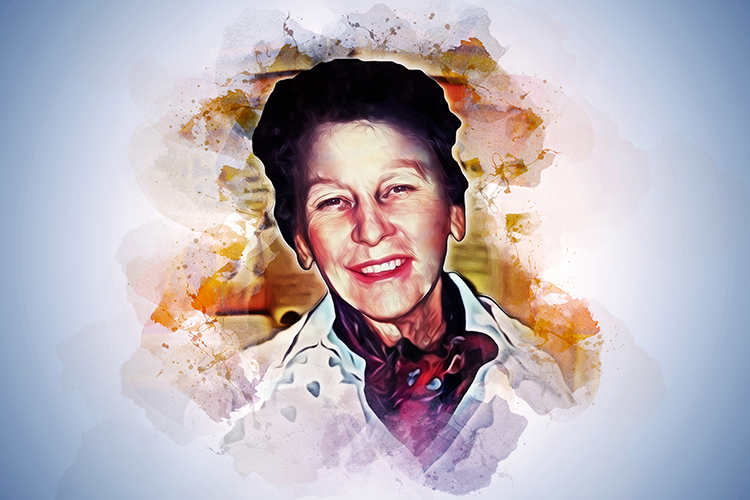 Thomas Mulholland and Erik Peper
Thomas Mulholland and Erik Peper (1971) showed that occipital alpha increases with
eyes open and not focused and is disrupted by visual focusing, a rediscovery of alpha blocking.
Green and Green (1969, 1970, 1977) investigated voluntary control of
internal states by individuals like Swami Rama and American Indian medicine man Rolling Thunder both in India
and at the Menninger Foundation. They brought portable biofeedback equipment to India and monitored
practitioners as they demonstrated self-regulation. A film containing footage from their investigations was
released as
Biofeedback: The Yoga of the West (1974).
They developed
alpha-theta training at the
Menninger Foundation from the 1960s to the 1990s. They hypothesized that
theta states allow access to unconscious memories and increase the
impact of prepared images or suggestions. Their alpha-theta research fostered
Peniston's
development of an alpha-theta addiction protocol.
They pioneered temperature biofeedback training for Raynaud's, migraine, and hypertension, and wrote the classic
Beyond Biofeedback (1977).
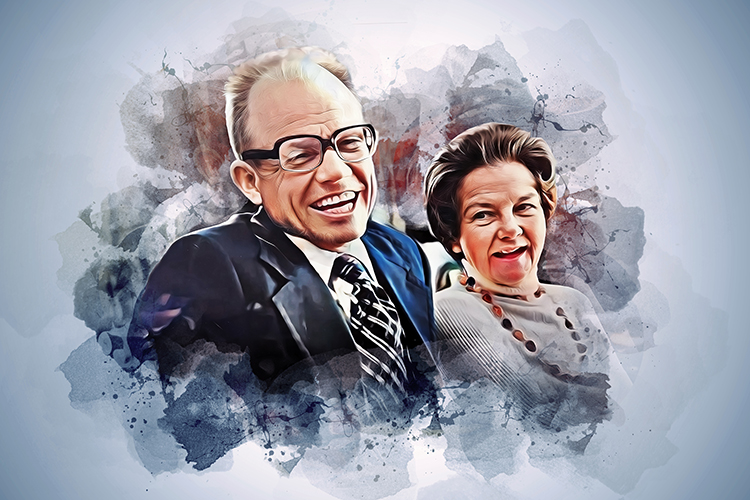
Lester Fehmi (1969) developed
Open Focus training, has
studied the relationship between global synchrony and states of awareness. He has pioneered neurofeedback to modify brain synchrony, especially in attentional disorders.
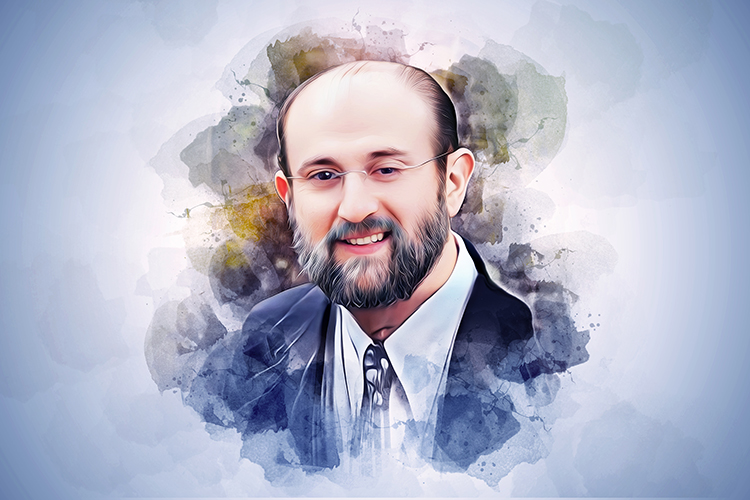 Thomas Hice Budzynski
Thomas Hice Budzynski (1969, 1973) developed a twilight learning device that monitors left
hemisphere EEG while a patient sleeps and plays recorded
affirmations (positive statements) when theta is present. The premise of
twilight learning
is
that affirmations have a greater impact when presented in a transitional state in which theta waves replace the
alpha rhythm.
He studied the lateralization of
brain function across the two cerebral hemispheres. Budzynski explored using neurofeedback and audio-visual stimulation to
correct age-related cognitive decline.
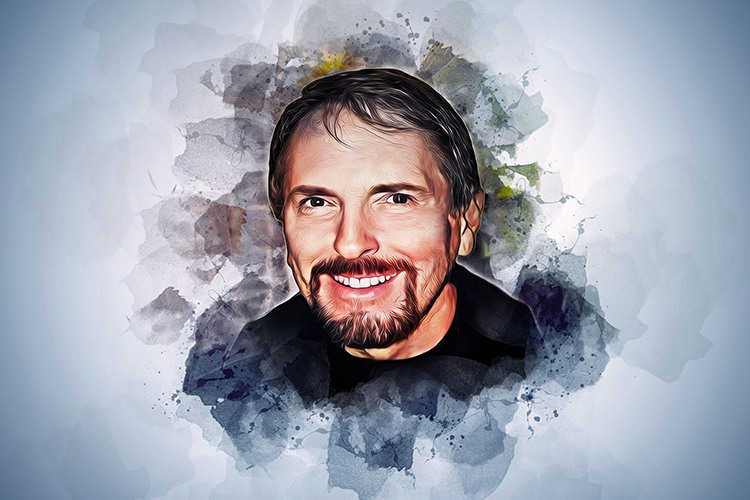
M. Barry Sterman (1973) showed that cats and human participants could be operantly
trained to
increase the amplitude of the
sensorimotor rhythm (SMR). He demonstrated that SMR production could protect cats against
drug-induced
generalized seizures (tonic-clonic seizures involving loss of
consciousness) and reduces the frequency of seizures in humans diagnosed with epilepsy. He
showed that his SMR protocol, which uses visual and auditory EEG
biofeedback, normalizes their EEGs (SMR increases while theta and beta
decrease toward normal values) even during sleep. Sterman also co-developed the Sterman-Kaiser (SKIL) QEEG
database.
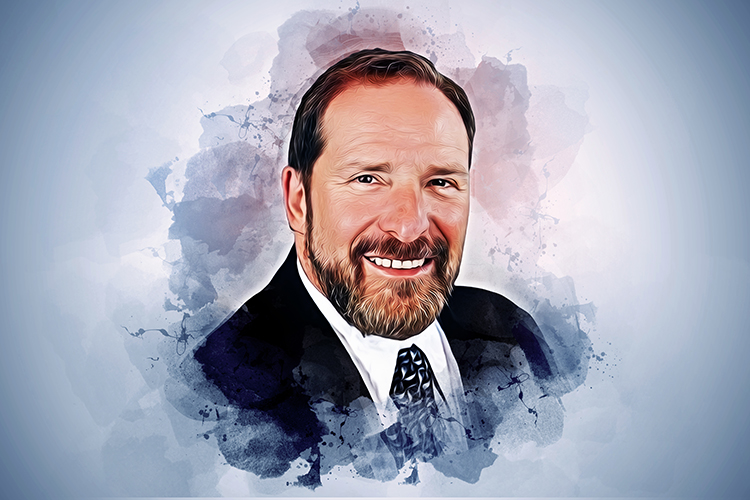 Niels Birbaumer and colleagues
Niels Birbaumer and colleagues (1981) have studied feedback of slow cortical
potentials since the late 1970s. They have demonstrated that participants can
learn to control these DC potentials and have investigated the efficacy of slow cortical potential biofeedback
in treating ADHD, epilepsy, and schizophrenia.
 Joel Lubar
Joel Lubar (1989) studied SMR biofeedback to treat attention disorders and
epilepsy in collaboration with Sterman. He demonstrated that alpha-theta NF training could improve attention and
academic performance in children diagnosed with Attention Deficit
Disorder with Hyperactivity (ADHD). He documented the importance of theta-to-beta ratios in ADHD and developed
theta suppression-beta enhancement protocols to decrease these ratios and improve student performance.

Electrodermal Research
Early electrodermal researchers developed exosomatic and endosomatic methods for recording skin electrical activity. Marjorie Toomim utilized GSR biofeedback in psychotherapy.
Romain Vigouroux measured skin resistance in patients diagnosed with
hysterical anesthesia in 1879.
Charles Feré demonstrated the
exosomatic method (e.g., an external current applied to the skin) for
recording skin electrical activity by passing a small current through the skin in 1888.
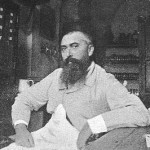 Ivan Tarchanoff
Ivan Tarchanoff (1890) used the
endosomatic method by
recording the difference in skin electrical potential from points on the skin surface in 1889; no external
current was applied.
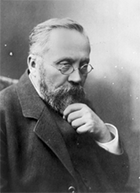 F. Peterson and Carl Jung
F. Peterson and Carl Jung (1907) employed the
galvanometer,
which used the exosomatic method to study unconscious emotions in word-association experiments. Carl Jung is pictured below.
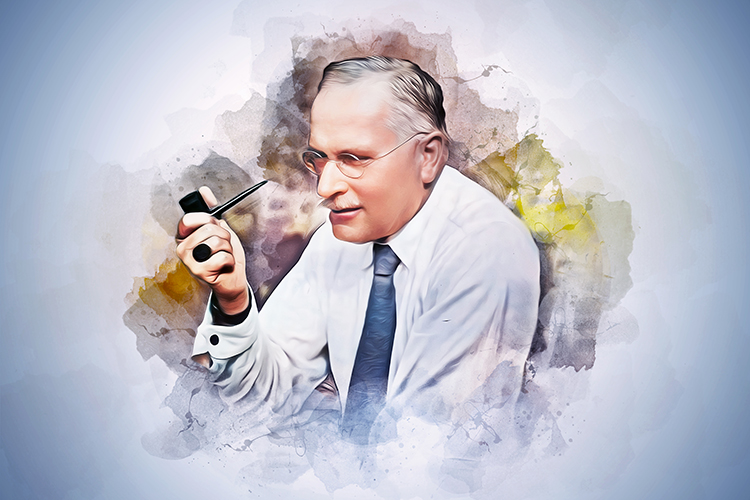 Marjorie and Hershel Toomim
Marjorie and Hershel Toomim (1975) published a landmark article
about the use of GSR biofeedback in psychotherapy.

Electromyographic Research
Edmund Jacobson (1938) developed the electromyograph to measure EMG voltages over time,
showed that cognitive activity (like imagery) affects EMG levels,
introduced the deep relaxation method,
Progressive Relaxation, and wrote
Progressive
Relaxation (1929) and
You Must Relax (1934). He prescribed
daily Progressive Relaxation practice to treat various
psychophysiological disorders like hypertension.
 Listen to a mini-lecture on Electromyographic Research and Relaxation
Listen to a mini-lecture on Electromyographic Research and Relaxation © BioSource Software.
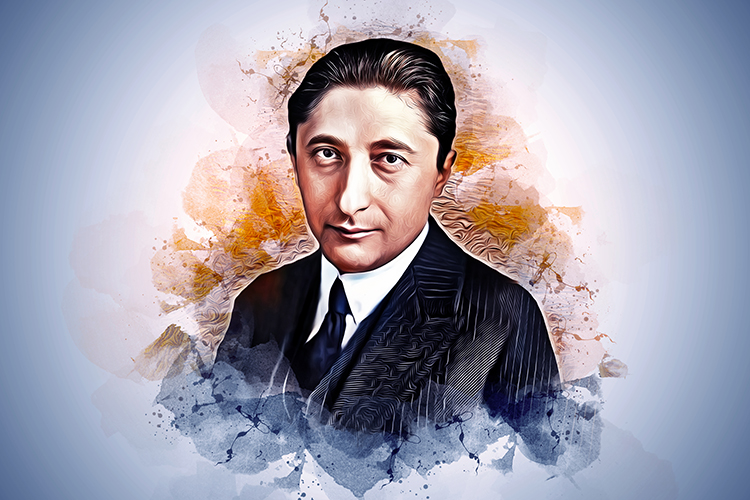
Several researchers showed that human participants could learn precise
control of individual
motor units (motor neurons and the muscle fibers
they control).
D. B. Lindsley (1935) found that relaxed participants could suppress
motor unit firing without biofeedback training.
V. F. Harrison and O. A. Mortensen (1962) trained participants using visual and auditory EMG biofeedback to control individual motor units in the leg's tibialis anterior muscle.
John V. Basmajian (1967) instructed participants using unfiltered auditory EMG biofeedback to control separate motor units in the thumb's abductor pollicis muscle in his Single Motor Unit Training (SMUT) studies.
His best participants coordinated several motor units to produce drum rolls.
Basmajian demonstrated practical applications for neuromuscular
rehabilitation, pain management, and headache treatment.
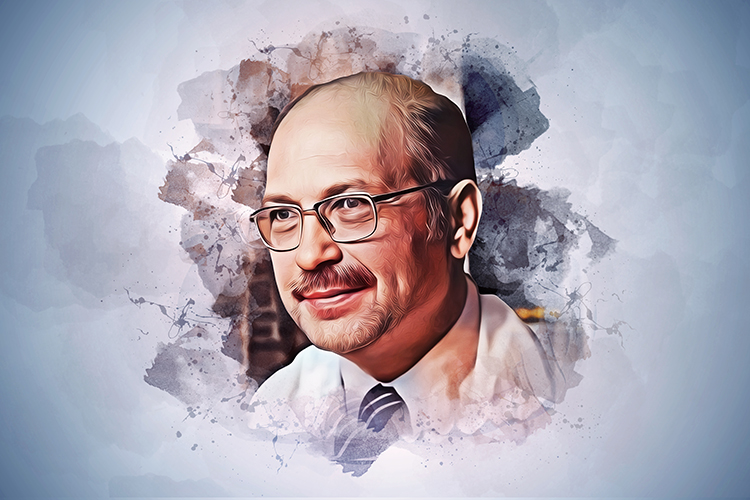 Alberto Marinacci
Alberto Marinacci (1960) applied EMG biofeedback to neuromuscular disorders
(where proprioception is disrupted), including Bell Palsy (one-sided facial
paralysis), polio, and stroke.
A health care model that sees no role for self-regulation in healing has frequently impeded acceptance
of innovative biofeedback concepts and applications. Physicians Alberto Marinacci and George Whatmore practiced
clinical biofeedback before the term existed. In the 1950s and 1960s, Marinacci used EMG biofeedback to treat
diverse neuromuscular disorders ranging from stroke to spasticity. In his 1955 book Clinical Electromyography,
he reported numerous successful EMG applications. Unfortunately, other clinicians did not adopt his work because
the culture could not conceive that patients could learn to voluntarily control their motor system and because
his training protocol often required a year. Then, as now, teaching patients to self-regulate is time intensive
and sacrifices the profits generated by prescription drugs and surgical procedures.
Marinacci's work, just like Edmund Jacobson's progressive relaxation, remained in the backwaters as
medicine ignored voluntary control and favored instant external cures. As long as physicians perceived the human
body as a machine that can only break down, they were unable to conceive of self-regulation. For example,
although Marinacci used EMG to treat neuromuscular disorders, his colleagues used the EMG only for diagnosis.
They were unable to recognize its potential as a teaching tool even when the evidence stared them in the face!
Many electromyographers who performed nerve conduction studies used visual and auditory feedback to reduce
interference when a patient recruited too many motor units. Even though they used EMG biofeedback to guide the
patient to relax so that clean diagnostic EMG tests could be recorded, they were unable to envision EMG
biofeedback treatment of motor disorders. Because Marinacci's work was not continued by others and challenged
prevailing cultural beliefs, his contributions to neuromuscular reeducation languished until they were
rediscovered. (Peper & Shaffer, 2010, p. 145)
George Whatmore and
Daniel Kohli (1968, 1974) introduced the concept of
dysponesis (misplaced
effort) to explain how
functional disorders (where body activity is
disturbed) develop. Bracing your shoulders when you hear a loud sound
illustrates dysponesis since this action does not protect you from
injury.
These clinicians applied EMG biofeedback to diverse functional
problems like headaches and hypertension. They reported case follow-ups
ranging from 6-21 years. This was long compared with typical 0-24-month
follow-ups in the clinical literature. Their data showed that skill in
controlling misplaced efforts was positively related to clinical
improvement.
Physicians George Whatmore and Daniel Kohli (1974) provide another example of innovative clinical
ideas that were largely ignored because they contradicted the dominant medical paradigm. They applied EMG
biofeedback to treat diverse medical disorders. In their Seattle clinic, they often simultaneously monitored
eight channels of EMG and searched for inappropriate muscle activity.
They coined the term dysponesis, which means "misplaced effort." For example, when you tighten your
shoulders while typing on a keyboard, this is wasted activity that might produce musculoskeletal pain. They
summarized their work in the 1974 text The Physiopathology and Treatment of Functional Disease. Their clinical
findings suggested that patients can learn to reverse many disorders and inspired recent interventions to reduce
autonomic arousal to inhibit trigger point activity. Their work, although rarely taught, provided some of the
most useful biofeedback concepts and strategies for reducing illness.
Why weren't Whatmore and Kohli's findings more widely accepted? The prevailing disease model in the
1970s did not encompass functional disease, the idea that dysfunctional behavior patterns could produce medical
symptoms, or its corollary, that learning healthy behavior patterns could reverse these symptoms. The underlying
concept that use modifies structure and structure limits use was not part of the worldview. By changing its use,
a structure may change. The split between mind and body is still seen in the treatment of many disorders and
depression, where cognitive therapy and exercise can be a more effective treatment than medication, even though
medication continues to be prescribed. (Peper & Shaffer, 2010, p. 145)
Jeff Cram, Steven Wolf, Erik Peper, and Edward Taub contributed to EMG assessment, ergonomic and workplace applications of SEMG, and spinal cord injury and stroke rehabilitation.
Jeff Cram (1988) developed static and dynamic EMG assessment protocols, including muscle scanning using a movable EMG sensor.
He identified anatomical sites for low back pain and headache assessment, published normative EMG values, and emphasized the importance of asymmetrical muscle activation in these disorders.
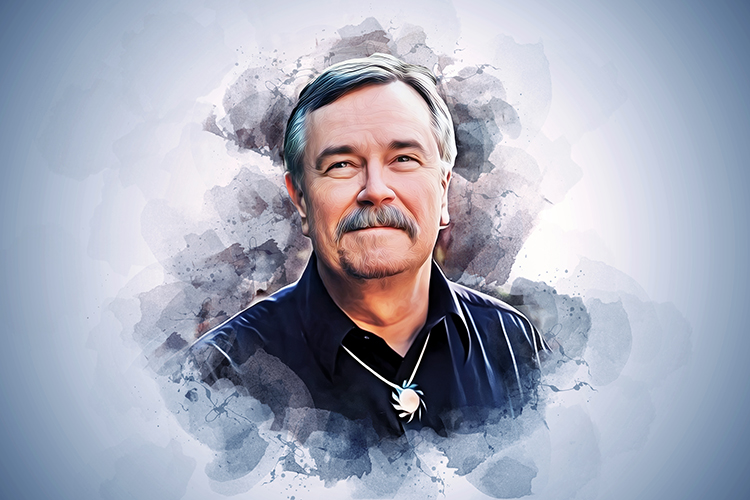 Steven Wolf
Steven Wolf (1983) integrated EMG
biofeedback into physical therapy to treat stroke patients and conducted
landmark stroke outcome studies.
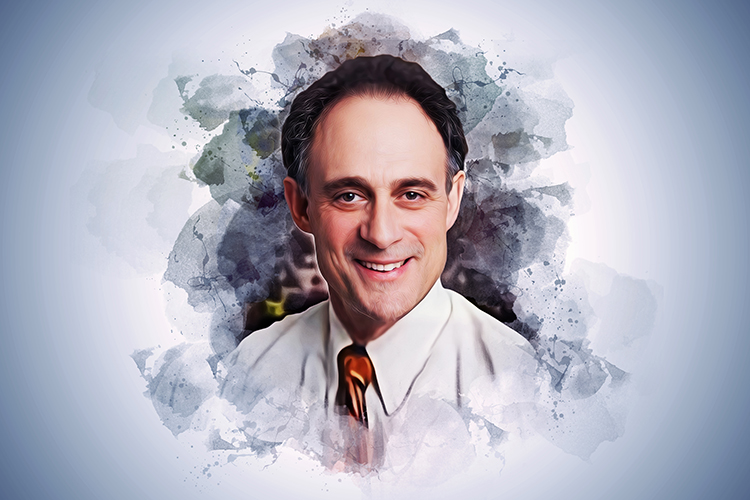 Erik Peper
Erik Peper (1997) applied SEMG to the workplace, studied the ergonomics of computer use, and promoted "healthy
computing."
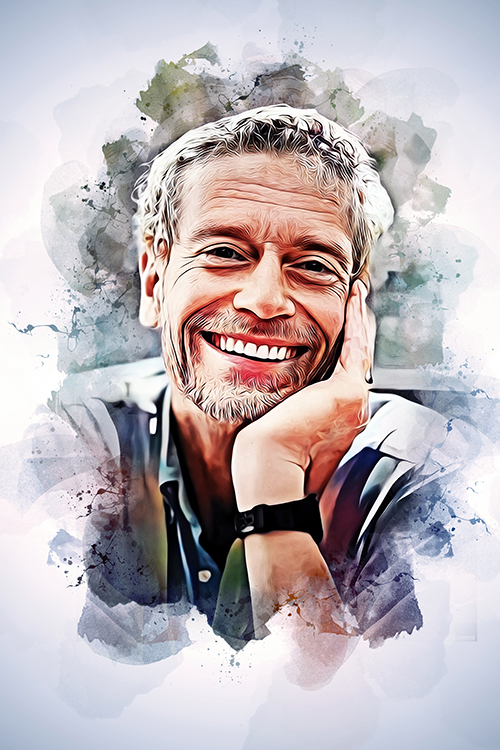 Edward Taub
Edward Taub (1999, 2006) demonstrated the
clinical efficacy of constraint-induced movement therapy (CIMT) to treat spinal cord-injured and stroke patients.
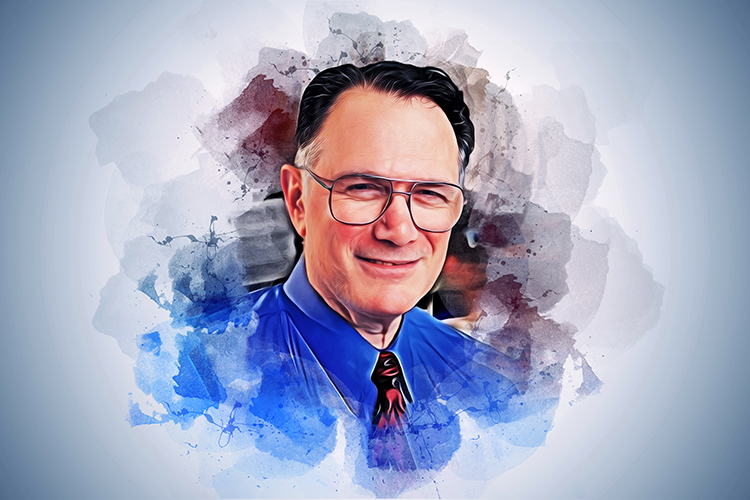
Cardiovascular Research
Early research by Shearn, Engel and Chism, Schwartz and colleagues, and Fahrion and colleagues explored cardiovascular changes during emotions and demonstrated the potential for voluntarily control of blood pressure, heart rate, and premature ventricular contractions.
D. W. Shearn (1962) operantly trained human participants to increase their heart
rates by 5 beats per minute to avoid electric shock.
In contrast to Shearn's slight heart rate increases,
Swami Rama used yoga
to produce
atrial flutter at an average of 306 beats per minute before a
Menninger Foundation audience. This briefly stopped
his heart's blood pumping and silenced his pulse (Green & Green, 1977).
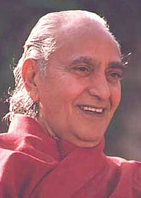
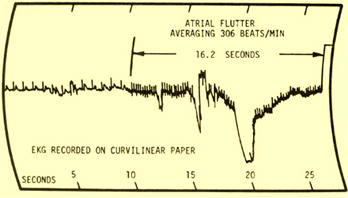 B. T. Engel and R. A. Chism
B. T. Engel and R. A. Chism (1967) operantly trained subjects to decrease, increase, and decrease their heart rates (analogous to ON-OFF-ON EEG training). increase, and
then decrease their heart rates (this was analogous to ON-OFF-ON EEG training). He then used this approach to
teach patients to control their rate of premature ventricular contractions (PVCs), where the ventricles contract
too soon. Engel conceptualized this training protocol as illness onset training since patients were taught to
produce and then suppress a symptom. Peper has similarly instructed asthma patients to wheeze to normalize their
breathing (Peper et al., 1979).
G. E. Schwartz, D. A. Weinberger, and J. A. Singer (1981) studied cardiovascular patterning in
six emotions using imagery, nonverbal expression, and exercise tasks. Their dependent variables were diastolic and
systolic blood pressure and heart rate. Participants' cardiovascular responses discriminated anger from fear
(blood pressure) and anger and fear from happiness and sadness. Schwartz is pictured below.
 Johannes Schultz
Johannes Schultz and
Wolfgang Luthe (1969) developed Autogenic Training, a deep
relaxation exercise derived from hypnosis. This procedure combines passive volition with imagery in three treatment procedures (standard Autogenic exercises, Autogenic neutralization, and Autogenic meditation).
Luthe (1973) also published a series of six volumes titled Autogenic Therapy. Schultz's Nazi history remains controversial. Schultz and Luthe are pictured below, respectively.
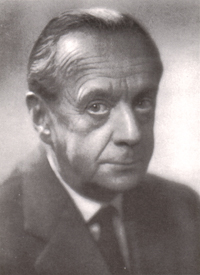
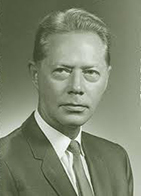
Clinicians at the Menninger Foundation coupled an abbreviated list of standard exercises with thermal biofeedback
to create autogenic biofeedback.
Despite their success, Elmer and Alyce faced the same academic myopia that Miller and DiCara
encountered. As late as the 1970s, some BSA researchers continued to argue that voluntary hand warming was
impossible. Likewise, when Elmer discussed the anatomical evidence supporting psychoneuroimmunology with
immunologists, many participants rejected the idea that psychological processes could affect immunocompetence or
vice-versa. Green's psychophysiological principle had to be wrong because "everyone knew" that the brain and
immune system were completely isolated. (Peper & Shaffer, 2010, p. 144)
Steve Fahrion and colleagues (1986) described an 18-26 session treatment
program for hypertensive patients. The Menninger program combined
breathing modification, autogenic biofeedback for the hands and feet, and
frontal EMG training. The authors reported that 89% of their medication
patients discontinued or reduced medication by one-half while
significantly lowering blood pressure. While this study did not include a
double-blind control, the outcome rate is impressive.
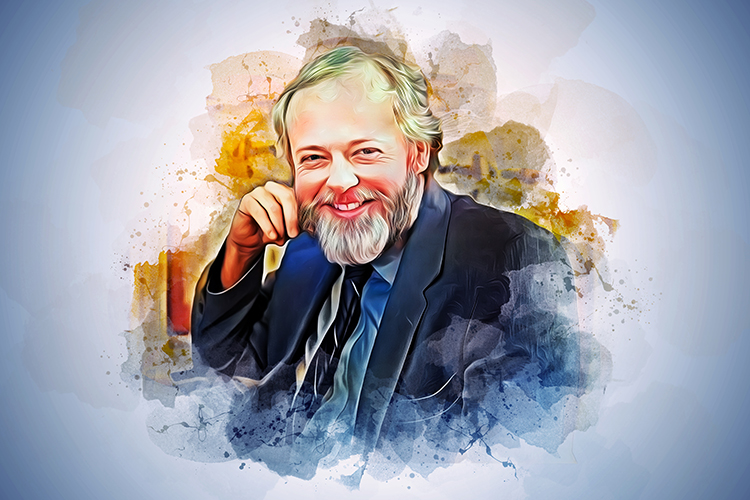
Robert Freedman (1988, 1991) demonstrated that hand-warming and hand-cooling are
produced by different mechanisms. Hand-warming is primarily
beta-adrenergic (hormonal), while hand-cooling is
alpha-adrenergic (sympathetic C-fibers). This contradicts the traditional view that sympathetic C-fibers exclusively control finger blood flow. The conventional model asserts that when firing is
slow, hands warm; when firing is rapid, hands cool. Freedman's studies mean that
hand-warming and hand-cooling represent entirely different skills.
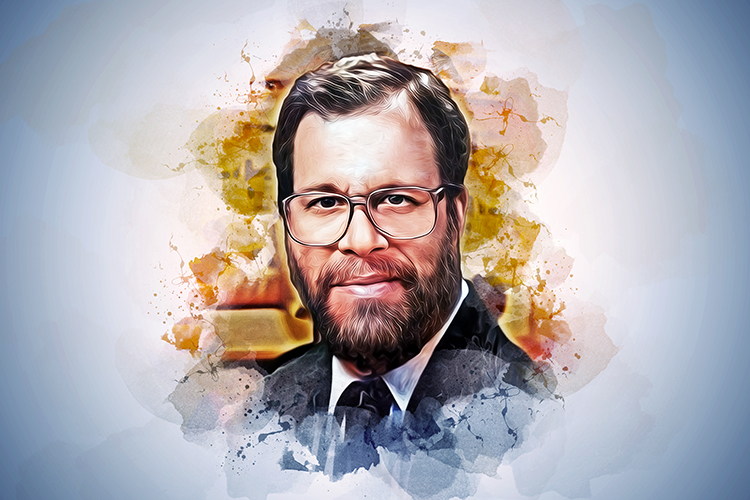
Evgeny Vaschillo and colleagues (1983) published the first studies of HRV
biofeedback with cosmonauts and treated patients diagnosed with psychiatric and psychophysiological disorders
(Chernigovskaya et al., 1990).

Listen to a mini-lecture on Vaschillo and Colleagues © BioSource Software.
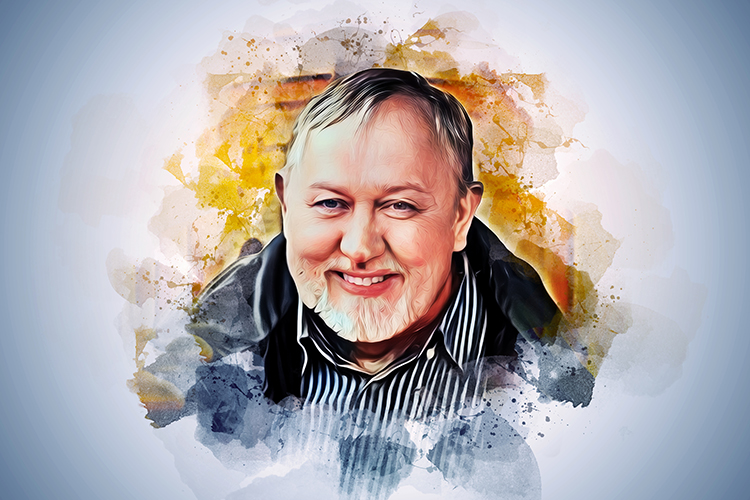 Paul M. Lehrer
Paul M. Lehrer collaborated with Smetankin and Potapova in treating pediatric asthma patients (Lehrer et al., 2000) and published influential articles on HRV asthma treatment in the medical
journal
Chest and
Principles and Practice of Stress Management.
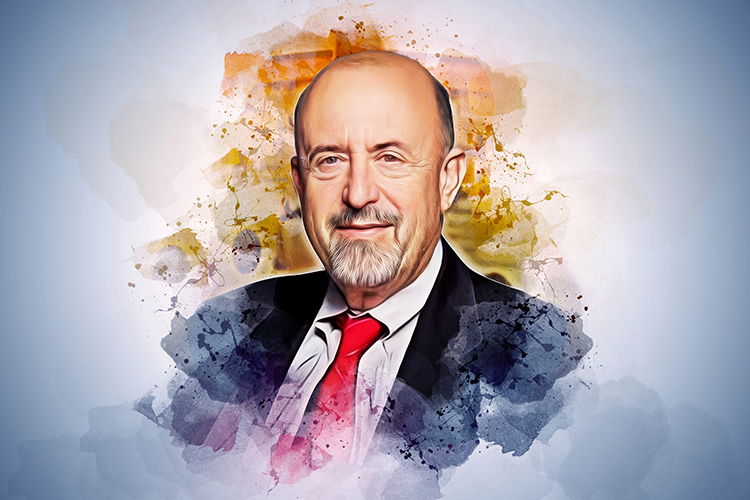
P. A. Humphreys and
Richard Gevirtz (2000) reported a successful randomized
controlled trial of HRV biofeedback in unexplained abdominal pain. Gevirtz is pictured below.
 Listen to a mini-lecture on Gevirtz
Listen to a mini-lecture on Gevirtz © BioSource Software.

Pain Research
Thomas Hice Budzynski and Johann Stoyva (1969, 1973) showed that EMG biofeedback could reduce
frontalis muscle (forehead) contraction. They demonstrated in 1973 that
analog
(proportional) and
binary (ON or OFF) visual EMG biofeedback were
equally helpful in lowering masseter SEMG levels.
 Listen to a mini-lecture on Gevirtz
Listen to a mini-lecture on Gevirtz © BioSource Software.

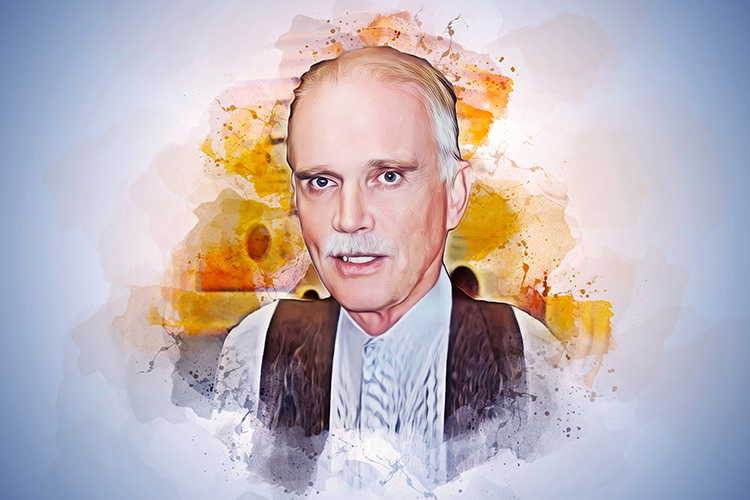
Budzynski, Stoyva, and Adler (1971) reported that auditory frontalis EMG
biofeedback combined with home relaxation practice lowered tension
headache frequency and frontalis EMG levels. A control group that received
noncontingent (false) auditory feedback did not improve. This study
helped make the frontalis muscle the placement-of-choice in EMG
assessment and headache treatment and other psychophysiological
disorders.
The clinical applications of EMG biofeedback, especially those for tension headaches and
psychotherapy, owe their origins to the creative work of Thomas Budzynski and Johann Stoyva, who published the
first study using EMG feedback for the treatment of tension headaches (Budzynski, Stoyva, & Adler, 1970).
Their successful clinical study incorporated relaxation practice as homework. They clearly foresaw that
successful biofeedback training involves more than just teaching a skill in the office. In most cases, success
depends on transferring and integrating the learned skill into the patients' daily lives. (Peper
Shaffer, 2010, p. 145)
J. D. Sargent, E. E. Green, and E. D. Walters (1972) demonstrated that hand-warming
could abort migraines and that autogenic biofeedback training could
reduce headache activity. Although methodologically weak (no pretreatment baselines, control groups, or random assignment to conditions), the early Menninger migraine studies strongly influenced migraine treatment.
Herta Flor (2002) trained amputees to
detect the location and frequency of shocks delivered to their stumps,
which resulted in an expansion of corresponding cortical regions and
a significant reduction of their phantom limb pain.
 David Hubbard and Gevirtz
David Hubbard and Gevirtz (1994) proposed
that the sympathetic nervous system innervation of muscle spindles underlies trigger points.
Conclusion
The beauty of the tapestry of biofeedback history has come from the unique perspectives of its
contributors; the courage of researchers such as Joe Kamiya, Neil Miller, and Leo DiCara to challenge prevailing
dogma; the generosity of mentors such as Thomas Mulholland; and the imagination of visionaries such as Elmer and
Alyce Green. Continued progress in biofeedback depends on vigorous collaboration between clinicians and academic
researchers. Clinicians can teach investigators how to successfully train their participants, whereas researchers
can help clinicians evaluate the efficacy of their interventions. (Peper & Shaffer, 2010, p. 146)
Biofeedback Timeline
Fran Butler was indispensable in the founding and guidance of the Biofeedback Society of America (now the Association for Applied Psychophysiology and Biofeedback; AAPB) and the Biofeedback Certification Institute of America (now the Biofeedback Certification International Alliance; BCIA). She has generously and wisely mentored generations of leaders in our field. Fran continues to advocate for biofeedback and promote AAPB and BCIA's missions.
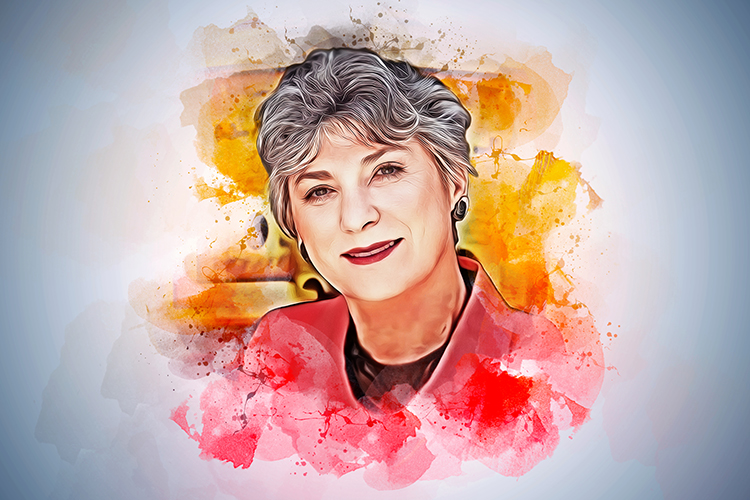
1962 - Publication of
Muscles Alive by John Basmajian and Carlo De Luca
1965 - David Shapiro taught the first academic course in psychophysiology at Harvard University
1968
- Annual Veteran's Administration research meeting in Denver that brought together several biofeedback
researchers
1969 - Conference on Altered States of Consciousness in Council Grove, Kansas in April and first meeting of the
Bio-Feedback Research Society (BRS) at the Surfrider Inn in Santa Monica in October
1972 - Publication of
Handbook of Psychophysiology by Greenfield and Sternbach
1975 - American Association of Biofeedback Clinicians was founded
1976 - BRS was renamed the Biofeedback Society of America (BSA)
1977 - Publication of
Beyond Biofeedback by Elmer and Alyce Green and
Biofeedback: Methods and
Procedures in Clinical Practice by George Fuller
1978 - Publication of
Biofeedback: A Survey of the Literature by Francine Butler
1979 - Publication of
Biofeedback: Principles and Practice for Clinicians by John Basmajian and
Mind/Body Integration: Essential Readings in Biofeedback by Erik Peper, Sonia Ancoli, and Michele Quinn
1980 - Biofeedback Certification Institute of America (BCIA) offered the first national certification
examination in biofeedback and publication of
Biofeedback: Clinical Applications in Behavioral Medicine
by David Olton and Aaron Noonberg
1984 - Publication of
Principles and Practice of Stress Management by Woolfolk and Lehrer
1987 - Publication of
Biofeedback: A Practitioner's Guide by Mark Schwartz
1989 - BSA was renamed the Association for Applied Psychophysiology and Biofeedback
1991 - BCIA offered first national certification examination in stress management
1994 - Brain Wave and EMG sections were established within AAPB
1995 - Society for the Study of Neuronal Regulation (SSNR) was founded
1996 - Biofeedback Foundation of Europe (BFE) was established
1999 - SSNR was renamed the Society for Neuronal Regulation (SNR)
2002 - SNR was renamed the International Society for Neuronal Regulation (iSNR)
2003 - Publication of
The Neurofeedback Book by Thompson and Thompson
2004 - Publication of
Evidence-Based Practice in Biofeedback and Neurofeedback by Carolyn Yucha and
Christopher Gilbert
2006 - ISNR was renamed the International Society for Neurofeedback & Research (ISNR)
2008 - Biofeedback Neurofeedback Alliance was formed to pool the resources of the AAPB, BCIA, and ISNR on
joint initiatives
2008 - Biofeedback Alliance and Nomenclature Task Force defined biofeedback
2009 - the International Society for Neurofeedback & Research defined neurofeedback
2010 - the Biofeedback Certification Institute of America was renamed the Biofeedback Certification International Alliance (BCIA)
2011 -
the Biofeedback Certification International Alliance (BCIA) concluded an affiliate agreement with the Biofeedback Certification International Alliance-Australia (BCIA-A)
2012 - BCIA approved its Certificate of Completion Program in
Heart Rate Variability Biofeedback and the International Society for Neurofeedback & Research published
Practice
Guidelines for Neurofeedback and
IEEE Recommended Practice for Neurofeedback Systems
2013 - AAPB published
Standards for Performing Biofeedback and the Biofeedback Foundation of Europe was
renamed the Biofeedback Federation of Europe
2014 - BCIA became self-managed with Judy Crawford as its first Board-appointed Executive Director
2020 - AAPB inaugurated its first virtual conference, and ISNR was renamed the International Society for Neuroregulation & Research and adopted Professional Standards and Ethical Principles proposed by Donald Moss and Fred Shaffer that were modeled on the BCIA guidelines they helped author
2022 - AAPB replaced the Kellen Company with Association Pro To Go with Leslie Shivers as its first Board-confirmed Executive Director. AAPB published the
Primer of Biofeedback by Don Moss and Fred Shaffer.
2023 - AAPB released
Evidence-Based Practice in Biofeedback and Neurofeedback (4th ed.)
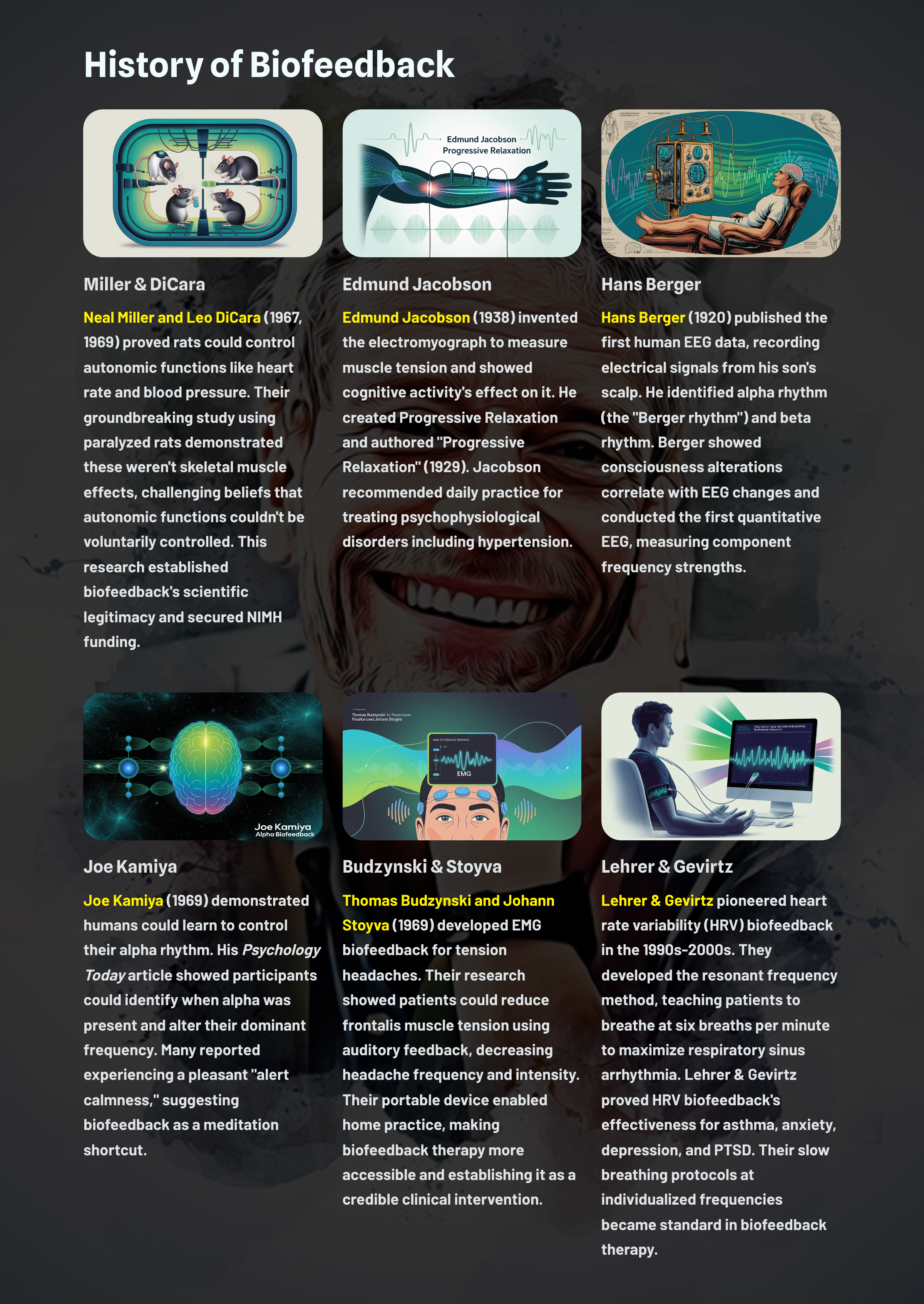
Glossary
affirmations: positive statements like "Every day I am getting better in every way."
alpha rhythm: the first EEG rhythm (8 to 12 Hz) discovered by Berger that observed in three-quarters of adults when they are calm, awake, and not actively processing information.
alpha-adrenergic: G protein-coupled receptors for the catecholamines epinephrine and norepinephrine. Freedman proposed that hand-cooling occurs when sympathetic C-fibers release these catecholamines and they bind to alpha-adrenergic receptors on arterioles.
alpha-theta training: training to progressively slow the EEG, increasing alpha and then theta abundance. This protocol was developed by Brown and the Menninger Foundation and then adopted by Peniston and Kulkovsky in treating alcoholics.
analog: proportional feedback. For example, a bar chart that grows as SEMG activity increases. Budzynski and Stoyva compared analog and binary biofeedback in teaching participants to control the masseter muscle used in chewing.
artifacts: false signals, like 50/60Hz artifact from power outlets, that can masquerade as a patient's physiological activity.
atrial flutter: an abnormally fast heart rhythm in the atria (upper chambers) of the heart that Swami Rama voluntarily produced during a demonstration at the Menninger Foundation.
Autogenic Training: Schultz and Luthe's deep
relaxation exercise derived from hypnosis that combines
passive volition with imagery in a series of three treatment procedures.
beta rhythm: the second EEG rhythm (12-16 Hz) discovered by Berger.
beta-adrenergic: G protein-coupled receptors for the catecholamines epinephrine and norepinephrine. Freedman discovered that when these circulating catecholamines bind to beta-adrenergic receptors inside arterioles
, this produces hand-warming.
binary: ON or OFF feedback. For example, a tone only appears when SEMG activity falls below a target value like 2 microvolts. Budzynski and Stoyva compared analog and binary biofeedback in teaching participants to control the masseter muscle used in chewing.
biofeedback: information about psychophysiological performance obtained by noninvasive monitoring and used to help individuals ac
hieve
self-regulation through a learning
process that resembles motor skill learning.
Bio-Feedback Research Society (BRS): the original name of the Association for Applied Psychophysiology and Biofeedback (AAPB).
contingent negative variation (CNV): a steady, negative shift in potential detected at the vertex discovered by Walter that may reflect expectancy, motivation, intention to act, or attention.
curare: a paralytic drug used by Miller and DiCara to prevent rats from "cheating" by using skeletal muscles during operant conditioning of heart rate, blood
pressure, kidney blood flow, skin blood flow, and intestinal contraction.
cybernetic theory: Weiner proposed that living systems are
controlled by monitoring their results.
delta rhythm: 0.5-to-3.5-Hz EEG rhythm named by Walter that increases in adult Stage 3 sleep, brain injury, brain tumor, and developmental disability.
differentiated pattern: Schwartz's concept for an inverse change in autonomic responses. For example, a pattern of blood pressure increase and heart rate decrease.
dysponesis: Whatmore and Kohli's concept of
misplaced effort. For example, bracing your shoulders when you hear a loud sound.
endosomatic method: the measurement of skin electrical activity by detecting differences in skin potential from locations on the skin surface.
exosomatic method: the measurement of skin electrical activity by passing an external current through the skin.
feedback: in cybernetic theory, orders to correct small errors to prevent larger future errors in a closed system.
feedforward: in cybernetic theory, orders to act based on anticipated conditions in an open system.
functional disorders: medical disorders due to abnormal system function. For example, chronic abdominal pain due to stress.
generalized seizures: seizures characterized by a peculiar cry, loss of consciousness, falling, tonic-clonic convulsions of all extremities, incontinence, and amnesia for the episode. These were previously called grand mal seizures.
homeostasis: a steady internal state proposed by Bernard and Cannon.
illness onset training: Engel's protocol taught patients to produce and then
suppress symptoms like premature ventricular contractions (PVCs).
instrumental learning: operant conditioning, an unconscious associative learning process that modifies the form and occurrence of voluntary behavior by manipulating its consequences.
integrated pattern: Schwartz's concept for autonomic change in the same direction. For example, a pattern of blood pressure increase and heart rate increase.
manometric flame: a device developed by Koenig and studied by Alexander Graham Bell for teaching the deaf to speak that
displayed sounds as patterns of light.
motor
unit: an alpha motor neuron and the skeletal muscle fibers it controls.
neuron: an excitable nervous system cell that processes and distributes information, chemically and electrically, and usually contains a soma (cell body), dendrites, and axon.
Open Focus training: Fehmi's attention training paradigm. For example, imagine the space between your eyes.
operant conditioning: an unconscious associative learning process that modifies the form and occurrence of an operant behavior (emitted behavior) by manipulating its consequences.
perineometer: a device developed by Kegel to treat urinary incontinence. Clients insert a perineometer into their vagina to
monitor pelvic floor muscle contraction.
phonautograph: a device developed by Leon Scott and studied by Alexander Graham Bell to teach the deaf to speak, translating sound vibrations into tracings on smoked glass to show their acoustic waveforms.
premature ventricular contractions (PVCs): an abnormal heart rhythm in which depolarization starts in the ventricle instead of the sinus node resulting in early ventricular contraction.
Progressive Relaxation: Jacobson's deep relaxation procedure originally trained patients to relax 2 or 3 muscle groups each session until 50 groups were trained during 50-60 sessions in the clinic and 1-2 daily one-hour practice sessions.
punisher: a consequence that weakens an operant behavior. For example, shoulder pain (punisher) following excessive exercise (operant behavior) may result in reduced exercise intensity.
punishment: in operant conditioning, the consequence of an operant behavior reduces its probability.
reinforcement: in operant conditioning, the consequence of an operant behavior increases its probability.
reinforcer: a consequence that strengthens an operant behavior. For example, weight loss (reinforcer) following daily walks (operant) may increase the probability of walking.
replication: reproduction of experimental findings.
retrahens muscle: the muscle studied by Bair that wiggles the ear.
self-regulation: control of your behavior (voluntary hand-warming).
sensorimotor rhythm (SMR): 12-15-Hz EEG rhythm that appears when one inhibits movement and relaxes muscles.
setpoint: system goal, for example, a thermostat setting of 75 degrees F (23.9 degrees C).
stress: Selye's concept of a nonspecific response to stimuli called stressors.
synapse: specialized chemical and electrical junctions across which neurons communicate with each other and non-neural cells.
system variable: the variable that is controlled. For example, room temperature is the system variable for a thermostat.
theta rhythm: the 4-to-7-Hz EEG rhythm discovered by Walter is associated with drowsiness, the transition from wakefulness to sleep, rapid eye movement (REM) sleep, and information processing.
twilight learning: Budzynski's training paradigm in which recorded material is played when theta activity replaces alpha activity.
urinary incontinence: involuntary loss of urine.
Test Yourself
Click on the ClassMarker logo to take 10-question tests over this unit without an exam password.

REVIEW FLASHCARDS ON QUIZLET
Click on the Quizlet logo to review our chapter flashcards.

Visit the BioSource Software Website
BioSource Software offers
Human Physiology, which satisfies BCIA's Human Anatomy and Physiology requirement, and
Biofeedback100, which provides extensive multiple-choice testing over BCIA's Biofeedback Blueprint.

Assignment
Who has contributed the most to your understanding of biofeedback or neurofeedback?
References
Adrian, E. D., & Mathews, B. H. C. (1934). The Berger rhythm.
Brain, 57, 355-385. https://doi.org/10.1093/brain/57.4.35
Andersen, P., Andersson, S. A. (1968).
Physiological basis of alpha rhythm. Appleton-Century-Crofts.
Andreassi, J. L. (2007).
Psychophysiology: Human behavior and physiological
response (5th ed.). Lawrence Erlbaum and Associates, Inc.
Bair, J. H. (1901). Development of voluntary control.
Psychological Review, 8, 474-510. https://doi.org/10.1037/h0074157
Basmajian, J. V. (1967).
Muscles alive: Their functions revealed by
electromyography. Williams and Wilkins.
Basmajian, J. V. (1979).
Biofeedback: Principles and practice for
clinicians. Williams and Wilkins.
Berger, H. (1920). Ueber das elektroenkephalogramm des menschen.
Archiv für Psychiatrie und
Nervenkrankheiten, 87, 527-570.
Bernard, C. (1957).
An introduction to the study of experimental medicine. Dover. (Originally
published, 1865.)
Birbaumer, N., Elbert, T., Lutzenberger, W., Rockstroh, B.,& Schwarz, J. (1981).
EEG and slow cortical potentials in anticipation of mental tasks with different hemispheric involvement.
Biol Psychol, 13, 251–260. https://doi.org/10.1016/0301-0511(81)90040-5
Bladin, P. F. (2006).
W. Grey Walter, pioneer in the electroencephalogram, robotics, cybernetics, artificial intelligence.
Journal of Clinical Neuroscience, 13(2), 170-177. https://doi.org/10.1016/j.jocn.2005.04.010
Bokser, I. O. (1999).
History of creation of the doctrine, equipment and methods of formation of biological feedback.
Med Tekh, 4,
44-46. PMID: 10464764
Brazier, M. A. B. (1959).
The EEG in epilepsy: A historical note.
Epilepsia, 1(1-5), 328-336. https://doi.org/10.1111/j.1528-1157.1959.tb04270.x
Bremer, F. (1935). Cerveau isole et physiologie du sommeil.
Com. Ren. Soc. Bio., (Paris), 118, 1235-1241.
Brown, B. (1974).
New mind, new body. Harper & Row.
Brown, B. (1977).
Stress and the art of biofeedback. Harper &
Row.
Brown, B. (1980).
Supermind: The ultimate energy. Harper &
Row.
Bruce, R. V. (1973).
Bell: Alexander Graham Bell and the conquest of solitude. Gollancz.
Budzynski, T. H., & Stoyva, J. M. (1969).
An instrument for producing deep muscle relaxation by means of analog information feedback.
Journal of Applied Behavior Analysis, 2, 231-237. https://doi.org/10.1901/jaba.1969.2-231
Budzynski, T. H., & Stoyva, J. M. (1973).
An electromyographic technique for teaching voluntary relaxation of the masseter muscle.
Journal of Dental Research, 52, 116-119. https://doi.org/10.1177/00220345730520010201
Budzynski, T. H., Stoyva, J. M., Adler, C. S., & Mullaney, D. (1973).
EMG biofeedback and tension headache: A controlled-outcome study.
Psychosomatic Medicine, 35, 484-496. PMID: 4770570
Busby-Whitehead, J., Johnson, T., & Clarke, M. K. (1996).
Biofeedback for the treatment of stress and urge incontinence.
The Journal of Urology, 156(2), 483. https://doi.org/10.1097/00005392-199608000-00053
Butler, F. (1978).
Biofeedback: A survey of the literature. IFI/Plenum Data Company.
Caton, R. (1875). The electric currents of the brain.
British Medical Journal, 2, 278.
Chernigovskaya, N. V., Vaschillo, E. G., Petrash, V. V., & Rusanovsky, V. V. (1990). Voluntary regulation of
the heart rate as a method of functional condition correction in neurotics.
Human Physiology, 16, 58-64.
Coenen, A. M. L., Zajachkivsky, O., & Bilski, R. (1998). Scientific priority of A. Beck in the neurophysiology.
Experimental and Clinical Physiology and Biochemistry, 1, 105-109.
Cram, J. (1988). Surface EMG recordings and pain-related disorders: A diagnostic framework.
Biofeedback and Self-Regulation, 12, 123-138,
Dement, W. (2000). The promise of Sleep:
A pioneer in sleep medicine explores the vital connection between
health, happiness, and a good night’s sleep. Random House.
E. Peper, S. Ancoli, & M. Quinn (Eds.). (1979).
Mind/Body integration: Essential readings in
biofeedback. Plenum Press.
Engel, B. T., & Chism, R. A. (1967).
Operant conditioning of heart rate speeding.
Psychophysiology, 3,
418-426. https://doi.org/10.1111/j.1469-8986.1967.tb02728.x
Engel, B. T. (1973).
Clinical applications of operant conditioning in the control of cardiac arrhythmias.
Seminars in Psychiatry, 5(4),
433-438.
Engel, G. L. (1977).
The need for a new medical model: A challenge for biomedicine.
Science, 196, 129-136. https://doi.org/10.1126/science.847460
Evans, J. R., & Abarbanel, A. (1999).
Introduction to quantitative EEG
and neurofeedback. Academic Press.
Fahrion, S., Norris, P., Green, A., Green, E., & Snarr, C. (1986).
Biobehavioral treatment of essential hypertension: A group outcome study.
Biofeedback-and-Self-Regulation, 11(4), 257-277. https://doi.org/10.1007/bf01000163
Fehmi, L. G. (1969). Auto-Regulation of electrophysiological processes
[Abstract].
Winter Brain Research Conference Abstracts, 80-81.
Feré, C., Note sur les modifications de la tension electrique dans le corps human,
Compt. rend. Soc. biol.,
5, 23.
Flor, H. (2002).
Phantom-limb pain: characteristics, causes, and treatment.
The Lancet, Neurology, 1 (3),
182-189. https://doi.org/10.1016/S1474-4422(02)00074-1
Forbes, A., & Mann, D. W. (1924). A revolving mirror for use with the string galvanometer.
J. Opt. Soc. Am.
and Rev. Sci. Instr., 8, 807-816. https://doi.org/10.1364/JOSA.8.000807
Freedman, R. R., Keegan, D., Migaly, P., Galloway, M. P., & Mayes, M. (1991).
Plasma catecholamines during behavioral treatments for Raynaud's Disease.
Psychosomatic Medicine, 53, 433-439. https://doi.org/10.1097/00006842-199107000-00008
Freedman, R. R., Sabharwal, S. C., Ianni, P., Desai, N., Wenig, P., & Mayes, M. (1988).
Nonneural beta-adrenergic vasodilating mechanism in temperature biofeedback.
Psychosomatic Medicine, 50(4), 394-401. https://doi.org/10.1097/00006842-198807000-00007
Fried, R. (1987).
The hyperventilation syndrome: Research and clinical treatment. John Hopkins
University Press.
Fried, R. (1993).
The psychology and physiology of breathing. Plenum Press.
Fuller, G. D. (1977).
Biofeedback: Methods and procedures in clinical practice. Biofeedback
Institute of San Francisco.
Green, E. E., Walters, E. D., Green, A. M., & Murphy, G. (1969).
Feedback technique for deep relaxation.
Psychophysiology, 6 (3), 371-377. https://doi.org/10.1111/j.1469-8986.1969.tb02915.x
Green, E., & Green, A. (1977).
Beyond biofeedback. Delacorte Press.
Green, E., Green, A. M., & Walters, E. D. (1970). Self-regulation of
internal states. In J. Rose (Ed.),
Progress of cybernetics:
Proceedings of the First International Congress of Cybernetics,
London, September 1969 (pp. 1299-1318). Gordon and Breach
Science Publishers.
Green, E., Green, A. M., & Walters, E. D. (1970).
Voluntary control of internal states: Psychological and physiological.
Journal of
Transpersonal Psychology, 2, 1-26.
Harrison, V. F., & Mortenson, O. A. (1962)
Identification and voluntary control of single motor unit activity in the tibialis anterior muscle.
Anatomical Record, 144, 109-116. https://doi.org/10.1002/ar.1091440205
Hassett, J. (1978).
A primer of psychophysiology. W. H. Freeman and Company.
Hothersall, D., & Brener, H. (1969). Operant conditioning of changes in heart rates in curarized rats.
Journal of Comparative and Physiological Psychology, 68(3), 338-342. https://doi.org/10.1037/h0027528
Humphreys, P. A., & Gevirtz, R. N. (2000).
Treatment of recurrent abdominal pain: Components analysis of four treatment protocols.
J Pediatr Gastroenterol Nutr, 31(1), 47-51. https://doi.org/10.1097/00005176-200007000-00011
Jacobson, E. (1938).
Progressive relaxation. University
of Chicago Press.
Kamiya, J. (1969). Operant control of
the EEG alpha rhythm. In C. Tart (Ed.),
Altered states of
consciousness. Wiley.
Kimmel, H. D. (1974).
Instrumental conditioning of autonomically mediated responses in human beings.
American
Psychologist, 29, 325-335. https://psycnet.apa.org/doi/10.1037/h0037621
Karavidas, M. K., Lehrer, P. M., Vaschillo, E., Vaschillo, B., Marin, H., Buyske, S., Malinovsky, I., Radvanski,
D., & Hassett, A. (2007).
Preliminary results of an open label study of heart rate variability biofeedback for the treatment of major depression.
Applied Psychophysiology and Biofeedback, 32(1), 19-30. https://doi.org/10.1007/s10484-006-9029-z
Kleitman, N. (1960). Patterns of dreaming.
Scientific American, 203(5), 82-88. https://doi.org/10.1038/scientificamerican1160-82
Lapides, J., Sweet, R. B., & Lewis, L. W. (1957). Role of striated muscle in urination.
Journal of Urology,
7, 247-250. https://doi.org/10.1016/S0022-5347(17)66549-2
Lehrer, P. M. (2007). Biofeedback training to increase heart rate variability. In P. M. Lehrer, R. M. Woolfolk,
& W. E. Sime (Eds.).
Principles and practice of stress management (3rd ed.)
. The
Guilford Press.
Lehrer, P. M., Smetankin, A., & Potapova, T. (2000).
Respiratory sinus arrhythmia biofeedback therapy for asthma: A report of 20 unmedicated pediatric cases using the Smetankin method.
Applied Psychophysiology and
Biofeedback, 25, 193-200. https://doi.org/10.1023/a:1009506909815
Lehrer, P., Vaschillo, E., Lu, S. E., Eckberg, D., Vaschillo, B., Scardella, A., & Habib, R. (2006).
Heart rate variability biofeedback: Effects of age on heart rate variability, baroreflex gain, and asthma.
Chest, 129(2),
278-284. https://doi.org/10.1378/chest.129.2.278
Lehrer, P. M., Vaschillo, E., & Vaschillo, B. (2000).
Resonant frequency biofeedback training to increase cardiac variability: Rationale and manual for training.
Applied Psychophysiology and Biofeedback, 25(3),
177-191. https://doi.org/10.1023/a:1009554825745
Lindsley, D. B. (1935). Characteristics of single motor unit responses in human muscle during various degrees of
contraction.
American Journal of Physiology, 113, 88-89.
Lisina, M. I. (1965). The role of orientation in the transformation of involuntary reactions into voluntary ones.
In I. G. Voronin, A. N. Leontiev, A. R. Luria, E. N. Sokolov, & O. B. Vinogradova (Eds.).
Orienting reflex
and exploratory behavior. American Institute of Biological Studies.
Lubar, J. F. (1989). Electroencephalographic biofeedback and
neurological applications. In J. V. Basmajian (Ed.),
Biofeedback:
Principles and practice for clinicians (3rd ed.), pp. 67-90.
Williams and Wilkins.
Lubar, J. F. (1991). Discourse on the development of EEG diagnostics and
biofeedback treatment for attention-deficit/hyperactivity disorders.
Biofeedback and Self-regulation,
16, 201-225. https://doi.org/10.1007/bf01000016
Lubar, J. F., & Shouse, M. N. (1977). Use of biofeedback in the
treatment of seizure disorders and hyperactivity. In B. B. Lahey & A. E.
Kazdin (Eds.),
Advances in clinical child psychology (pp.
203-265). Plenum Press.
Luthe, W. (1973).
Autogenic therapy: Treatment with autogenic neutralization. Grune &
Stratton.
Marinacci, A. A. (1960). Lower motor neuron disorders superimposed on the residuals of poliomyelitis. Value of the
electromyogram in differential diagnosis.
Bulletin of the Los Angeles Neurological Society, 2, 18.
McNulty, W. H., Gevirtz, R. N., Hubbard, D., & Berkoff, G. M. (1994). Needle electromyographic evaluation of
trigger point response to a psychological stressor.
Psychophysiology, 31(3), 313-316. https://doi.org/10.1111/j.1469-8986.1994.tb02220.x
McKnight, J. T., & Fehmi, L. G. (2001). Attention and neurofeedback
synchrony training: Clinical results and their significance.
Journal
of Neurotherapy, 5. https://doi.org/10.1300/J184v05n01_05
Miller, N. E. (1969).
Learning of visceral and glandular responses.
Science,
163, 434-445. https://doi.org/10.1126/science.163.3866.434
Miller, N. E. (1978).
Biofeedback and visceral learning.
Annual
review of psychology,
29, 373-404. https://doi.org/10.1146/annurev.ps.29.020178.002105
Miller, N. E., & Brucker, B. S. (1979). A learned visceral response apparently independent of skeletal ones in patients paralyzed by spinal lesions. In N. Birbaumer & H. D. Kimmel (Eds.),
Biofeedback and self-regulation (pp. 287-304). Hillside, NJ: Erlbaum.
Miller, N. E., & DiCara, L. (1967).
Instrumental learning of heart rate changes in curarized rats: Shaping and specificity to discriminative stimulus.
Journal of Comparative and Physiological Psychology,
63, 12-19. https://psycnet.apa.org/doi/10.1037/h0024160
Miller, N. E., & Dworkin, B. (1974). Visceral learning: Recent
difficulties with curarized rats and significant problems for human
research. In P. A. Obrist; A. H. Black, J. Brener, & L. V. DiCara (Eds.),
Cardiovascular psychophysiology (pp. 312-331). Aldine.
Monastra, V. J., Monastra, D. M., & George, S. (2002).
The effects of stimulant therapy, EEG biofeedback, and parenting style on the primary symptoms of Attention-Deficit/Hyperactivity Disorder.
Applied
Psychophysiology and Biofeedback, 27(4), 231-249.
Moss, D. (1998). Biofeedback, mind-body medicine, and the higher limits
of human nature. In D. Moss (Ed.).
Humanistic and transpersonal
psychology: A historical and biographical sourcebook. Greenwood Publishing.
Mowrer, O. H. (1960).
Learning theory and behavior. Wiley.
Mowrer, O. H., & Mowrer, W. M. (1938). Enuresis: A method for its study
and treatment.
American Journal of Orthopsychiatry, 8, 436-459.
Mulholland, T., & Peper, E. (1971).
Occipital alpha and accommodative vergence, pursuit tracking, and fast eye movements.
Psychophysiology, 8, 556-575.
N. S. Greenfield, & R. A. Sternbach (1972).
Handbook of psychophysiology.
Holt, Rinehart and Winston.
Olton, D. S., & Noonberg, A. R. (1980).
Biofeedback: Clinical applications in behavioral medicine. Prentice-Hall, Inc.
Peper, E., & Shaffer, F. (2010).
Biofeedback history: An alternative view.
Biofeedback, 38(4),
142-147.
doi:http://dx.doi.org/10.5298/1081-5937-38.4.03
Perry, J. D., & Talcott, L. B. (1989). The Kegel perineometer: Biofeedback twenty years before its time. A
"Special Historical Paper."
Proceedings of the 20th Annual Meeting of the Association for Applied
Psychophysiology and Biofeedback, San Diego, CA, 169-172.
Peterson, F., & Jung, C. G. (1907). Psycho-physical investigations with the galvanometer and pneumograph in
normal and insane individuals.
Brain, 30, 153-218. https://psycnet.apa.org/doi/10.1037/h0066997
Pravdich-Neminsky, V. V. (1913). Ein versuch der registrierung der elektrischen gehirnerscheinungen.
Zbl Physiol
27, 951–960.
Robbins, J. (2000).
A symphony in the brain. Atlantic Monthly Press.
Sargent, J. D., Green, E. E., & Walters, E. D. (1972).
The use of autogenic feedback training in a pilot study of migraine and tension headaches.
Headache, 12, 120-124. https://doi.org/10.1111/j.1526-4610.1972.hed1203120.x
Sargent, J. D., Walters, E. D., & Green, E. E. (1972).
Psychosomatic self-regulation of migraine headaches.
Seminars
in Psychiatry, 5, 415-427. PMID: 4770571
Schultz, J. H., & Luthe, W. (1969).
Autogenic therapy: Autogenic methods. Grune &
Stratton.
Schwartz, G. E. (1972).
Voluntary control of human cardiovascular integration and differentiation through feedback and reward.
Science,
175, 90-93. https://doi.org/10.1126/science.175.4017.90
Schwartz, G. E. (1982).
Psychological patterning and emotion from a systems perspective.
Social Science Information, 6, 781-817. https://doi.org/10.1177%2F053901882021006002
Schwartz, G. E., Weinberger, D. A., & Singer, J. A. (1981).
Cardiovascular differentiation of happiness, sadness, anger, and fear following imagery and exercise.
Psychosomatic Medicine,
43, 343-364. https://psycnet.apa.org/doi/10.1097/00006842-198108000-00007
Shearn, D. W. (1962). Operant conditioning of heart rate.
Science, 137, 530-531. https://doi.org/10.1126/science.137.3529.530
Sherrington, C. S. (1906).
The integrative action of the nervous system. Yale University
Press.
Shumay, D. and Peper, E. (1997). Healthy computing: A comprehensive group training approach using biofeedback. In
G. Salvendy, M. J. Smith, & R. J. Koubek (Eds.).
Design of computing systems: Cognitive considerations.
Elsevier.
Skinner, B. F. (1938).
The behavior of organisms: An experimental analysis. Appleton-Century.
Slaughter, J., Hahn, W. W., & Rinaldi, P.
(1970). Instrumental conditioning of heart rate in the curarized rat with varied amounts of pretraining.
Journal of Comparative and Physiological Psychology, 72(3), 356-359. https://psycnet.apa.org/doi/10.1037/h0029737
Sterman, M. B. (1973).
Neurophysiologic and clinical studies of sensorimotor EEG biofeedback training: Some effects on epilepsy.
Seminars in Psychiatry, 5, 507-524.
PMID: 4770578
Tarchanoff, J. (1890). Uber die galvanischen Erscheinungen an der Haut des Menschen bei Relzung der Sinnesorgane
und bei verschiedenen Formen der psychischen Tatigkeit.
Arch. ges. Physiol., 46, 46.
Tarchanoff, J. R. (1885). Voluntary acceleration of the heart beat in man.
Pfluger's Archive der gesamten
Physiologie, 35, 109-135.
Tarchanoff, J. (1890). Uber die galvanischen Erscheinungen an der Haut des Menschen bei Relzung der Sinnesorgane
und bei verschiedenen Formen der psychischen Tatigkeit.
Arch. ges. Physiol., 46, 46.
Taub, E. (2010). What psychology as a science owes Neal Miller: The example of his biofeedback research.
Biofeedback, 38(3), 108-117. https://doi.org/10.5298/1081-5937-38.3.108
Taub, E., Uswatte, G., King, D. K., Morris, D., Crago, J., & Chatterjee, A. (2006).
A placebo controlled trial of Constraint-Induced Movement therapy for upper extremity after stroke.
Stroke, 37, 1045-1049. https://doi.org/10.1161/01.STR.0000206463.66461.97
Taub, E., Uswatte, G., Pidikiti, R. (1999).
Constraint-Induced Movement therapy: A new family of techniques with broad application to physical rehabilitation—A clinical review.
Journal of Rehabilitation Research and
Development, 36, 237-251.
Thompson, M., & Thompson, L. (2003).
The neurofeedback book: An introduction to basic concepts in applied
psychophysiology. The Association for Applied Psychophysiology and Biofeedback.
Thorndike, E. (1911).
Animal intelligence: Experimental studies. The Macmillan Company.
Toomim, M., & Toomim, H. (1975, Spring). GSR biofeedback in psychotherapy: Some clinical observations.
Psychotherapy:
Theory, Research, and Practice, 12(1), 33-38. https://psycnet.apa.org/doi/10.1037/h0086402
Trowill, J. A. (1967). Instrumental conditioning of the heart rate in the curarized rat.
Journal of Comparative and Physiological Psychology, 63(1), 7-11. https://psycnet.apa.org/doi/10.1037/h0024162
Vaschillo, E. G., Zingerman, A. M., Konstantinov, M. A., & Menitsky, D. N. (1983). Research of the resonance
characteristics for the cardiovascular system.
Human Physiology, 9, 257-265.
Walter, W. G. (1937). The electro-encephalogram in cases of cerebral tumour.
Proceedings of the Royal Society of
Medicine, 30, 579-578. PMID: 19991061
Walter, W. G. (1953).
The living brain. Norton.
Walter, W. G., Cooper, R., Aldridge, V. J., McCallum, W. C., & Winter, A. L. (1964).
Contingent negative variation: An electric sign of sensorimotor association and expectancy in the human brain.
Nature, 203,
380-384. https://doi.org/10.1038/203380a0
Whatmore, G., & Kohli, D. (1968).
Dysponesis: A neuropsychologic factor in functional disorders.
Behavioral
Science, 13, 102-124. https://doi.org/10.1002/bs.3830130203
Whatmore, G., & Kohli, D. (1974).
The physiopathology and treatment of functional disorders. Grune & Stratton.
Wiener, N. (1948).
Cybernetics or control and communication in the animal and the machine.
MIT Press. John Wiley.
Wolf, S. L. (1983).
Electromyographic biofeedback applications to stroke patients. A critical review.
Phys Ther,
63(9), 1448–1459. https://doi.org/10.1093/ptj/63.9.1448
Woolfolk, R. L., & Lehrer, P. M. (Eds.).
Principles and practice of stress management. Guilford Press.










 br>
br>
















_AB.1.0435_Hitzig_CROPPED.tif.jpg)
















































